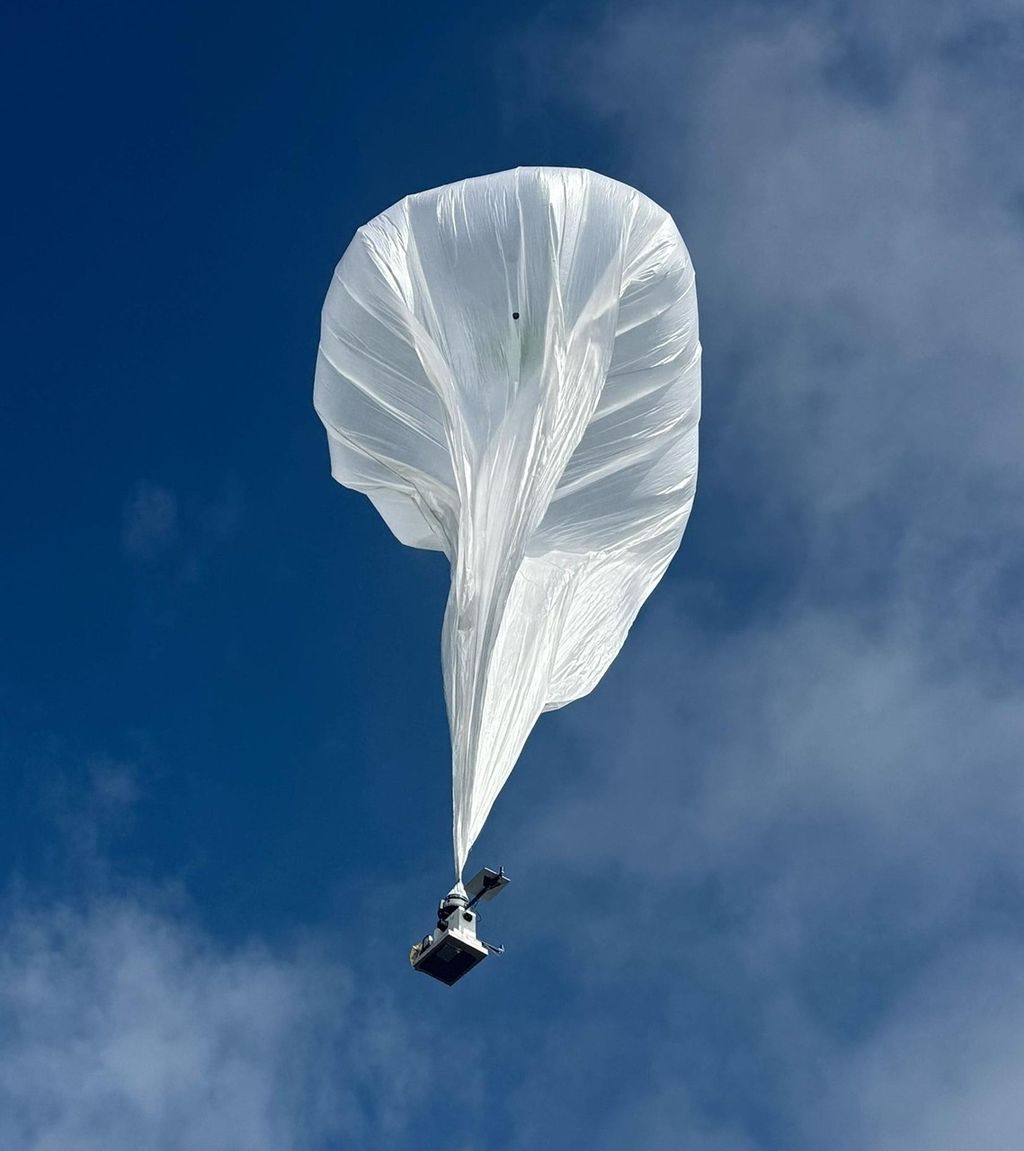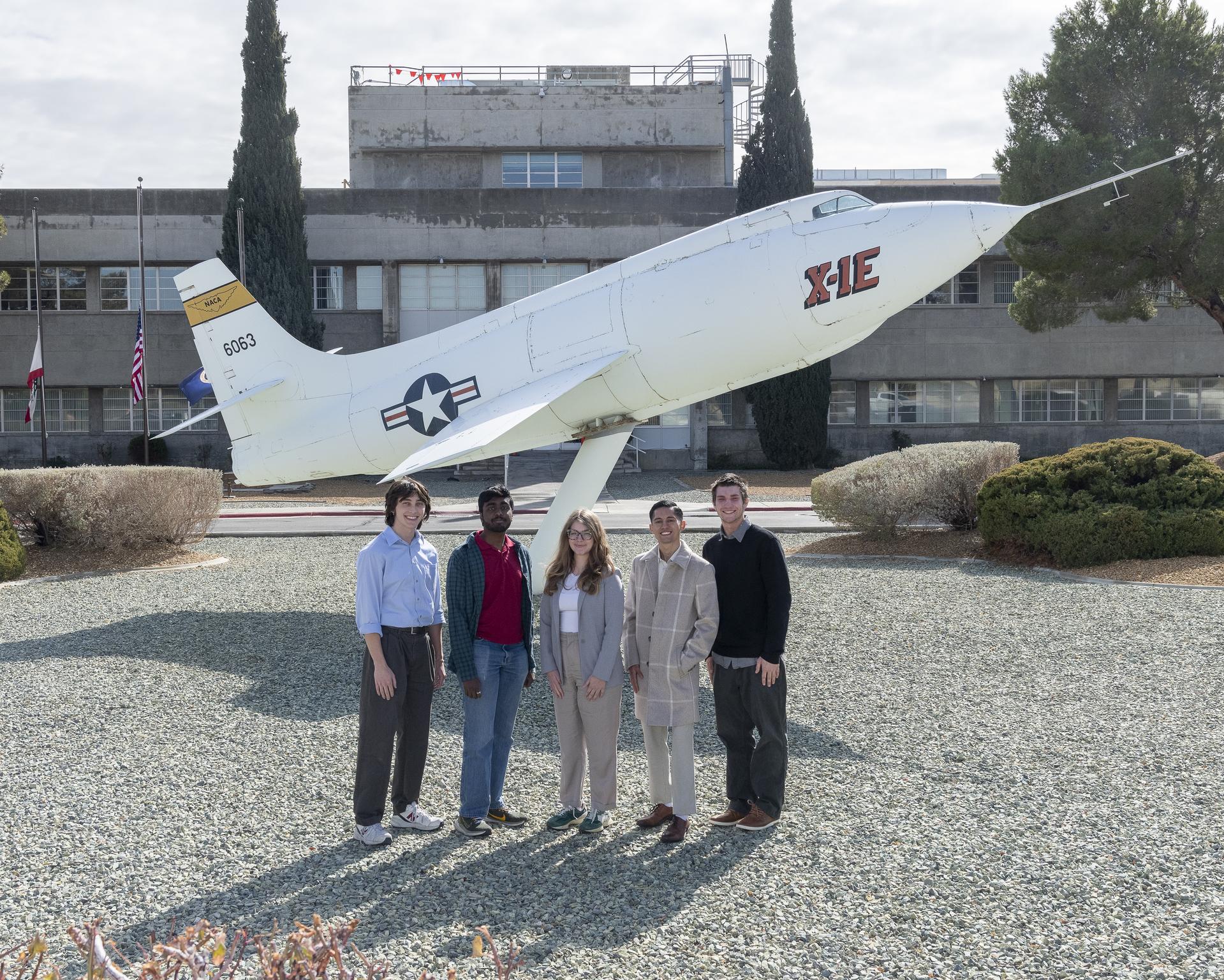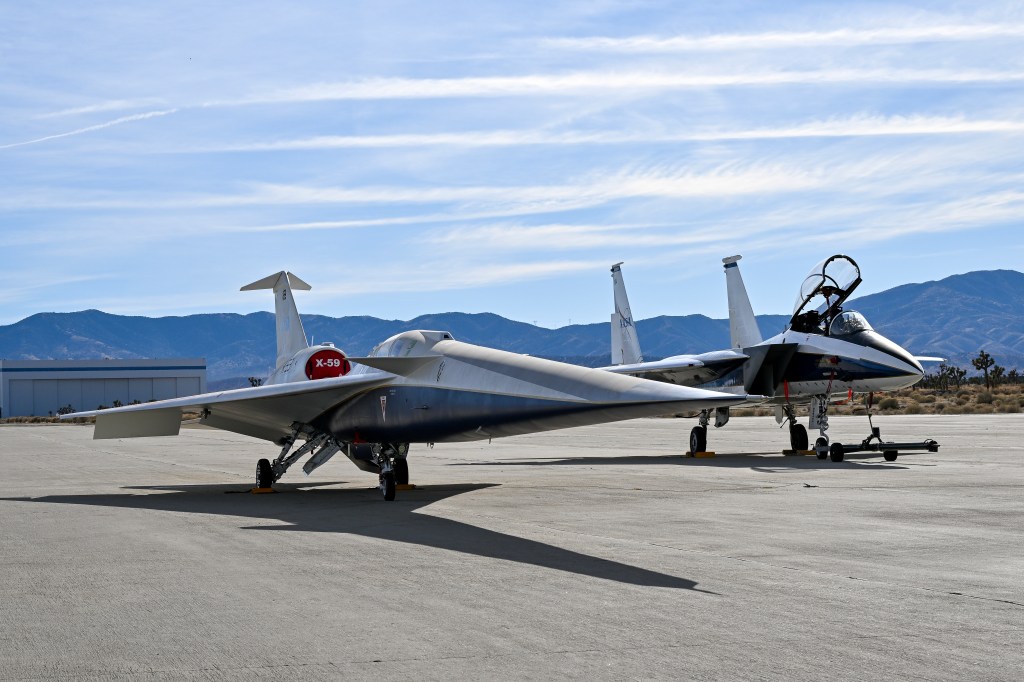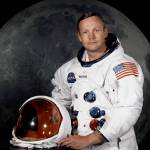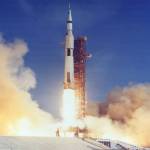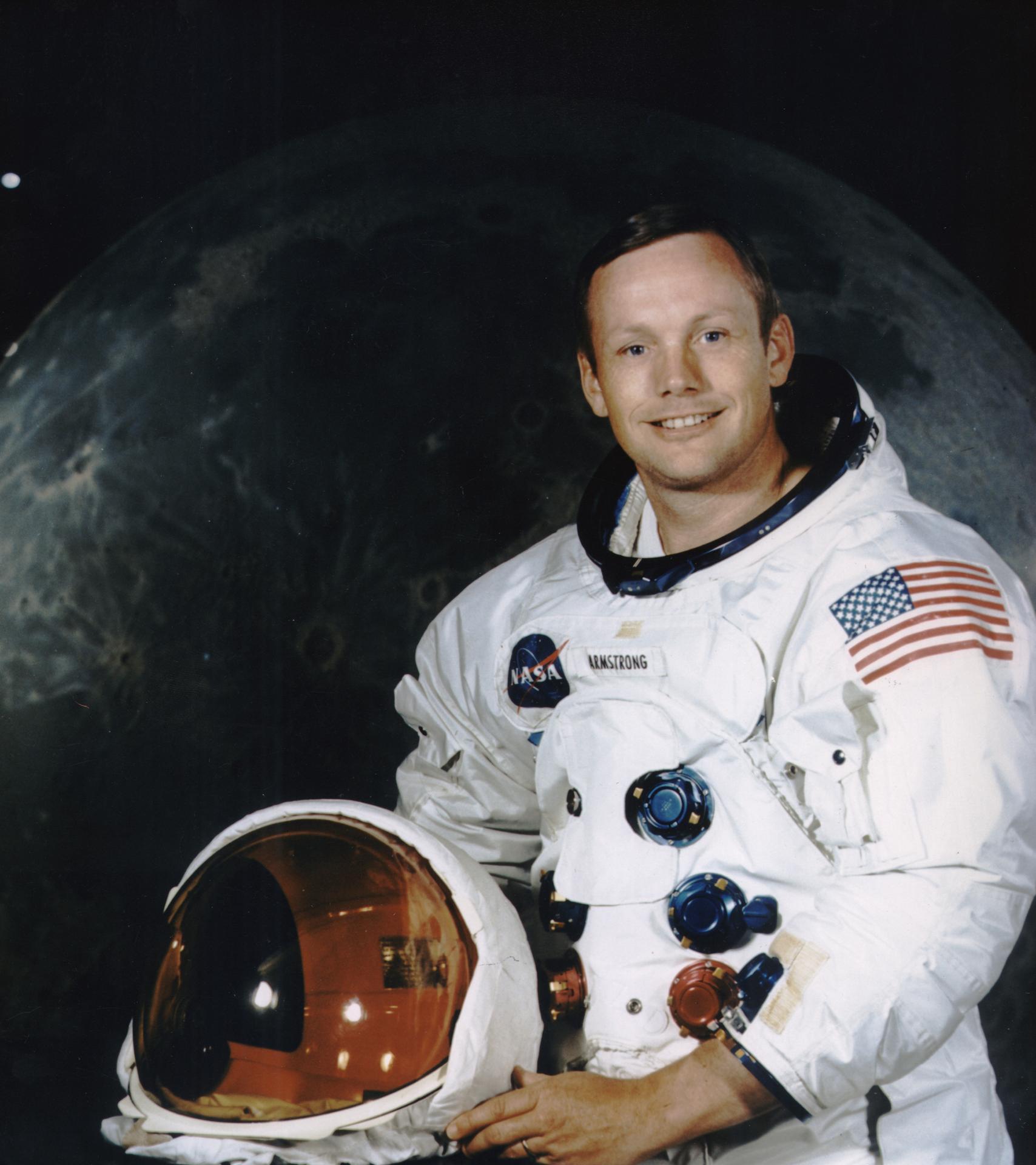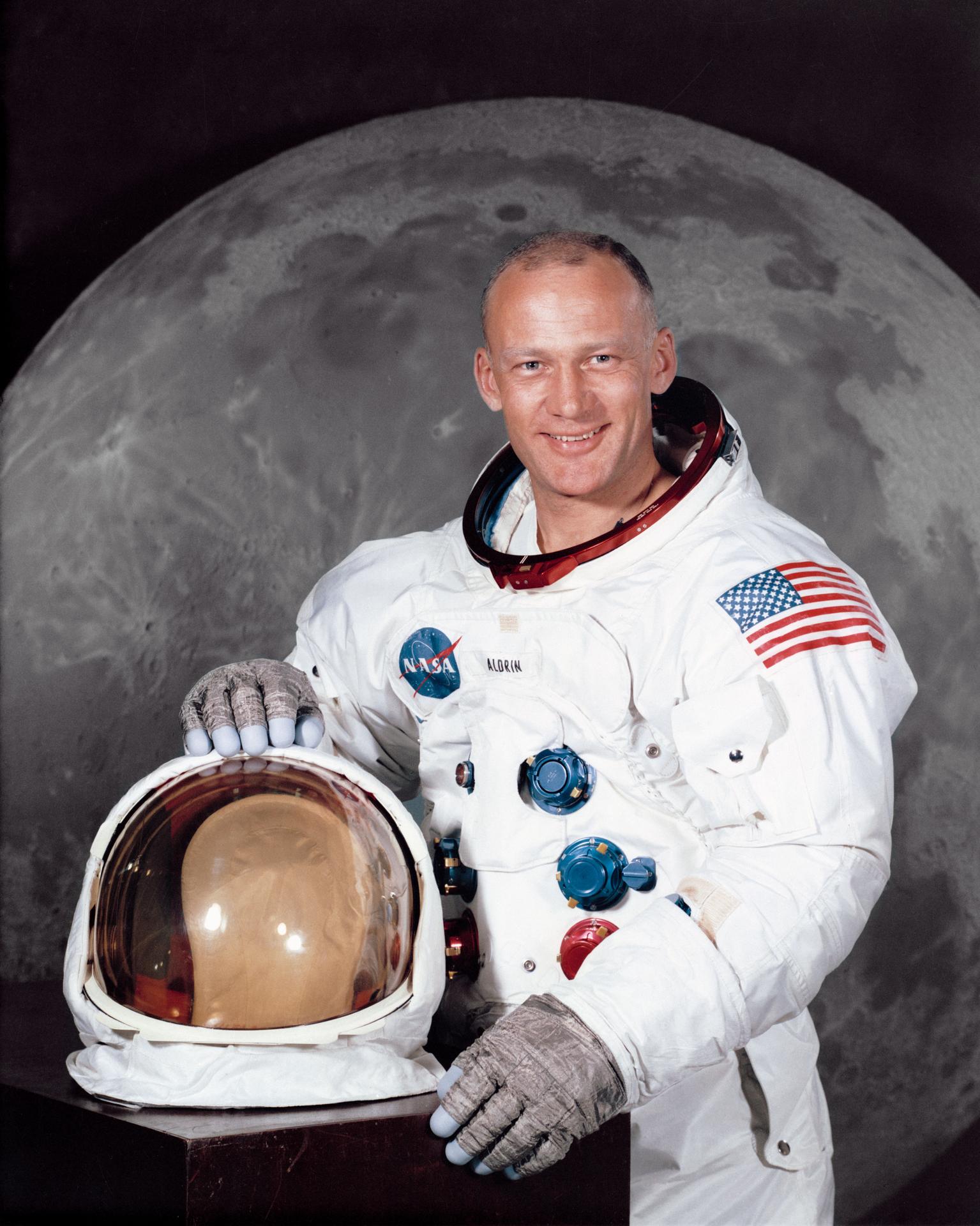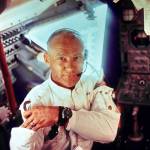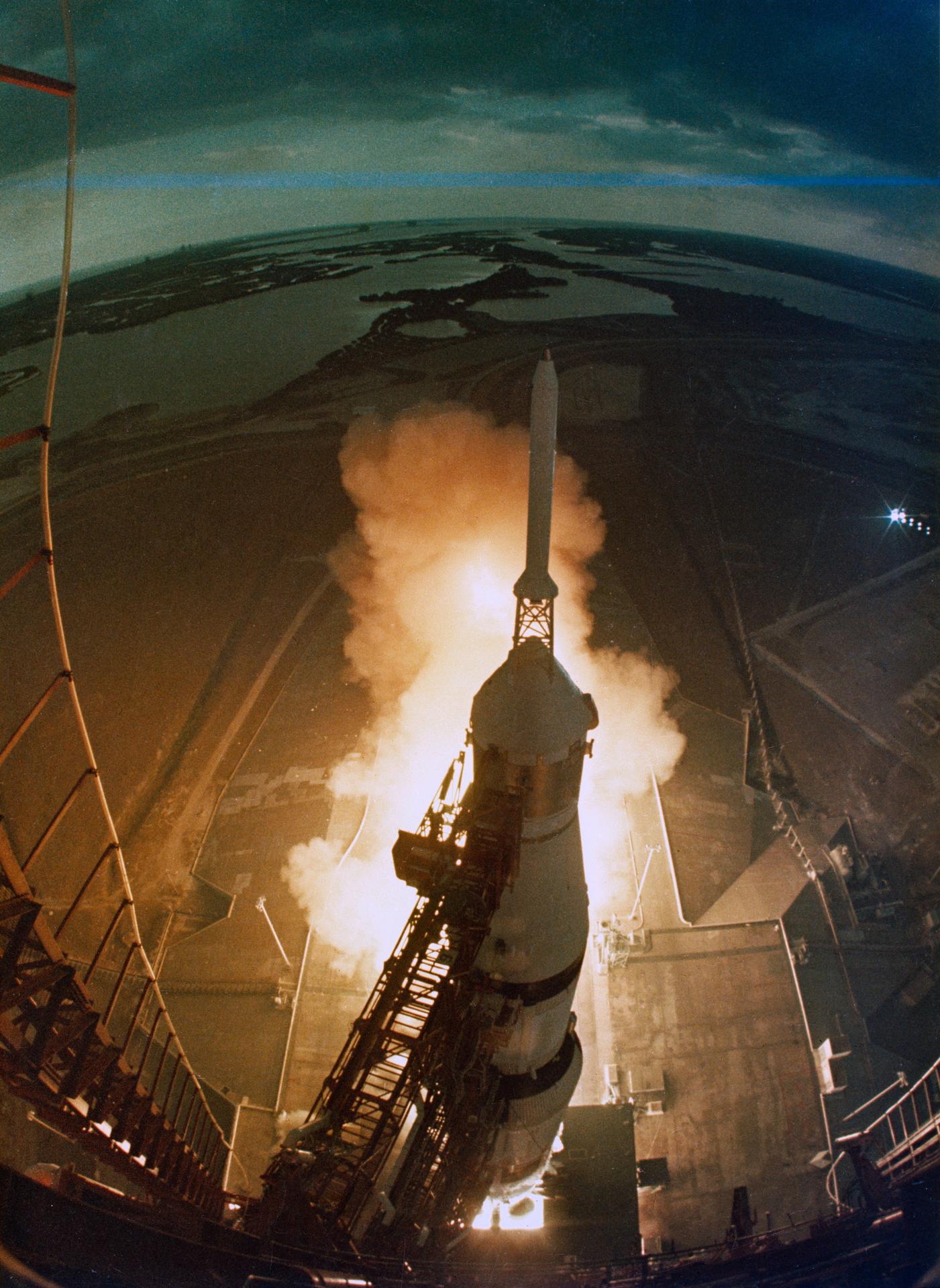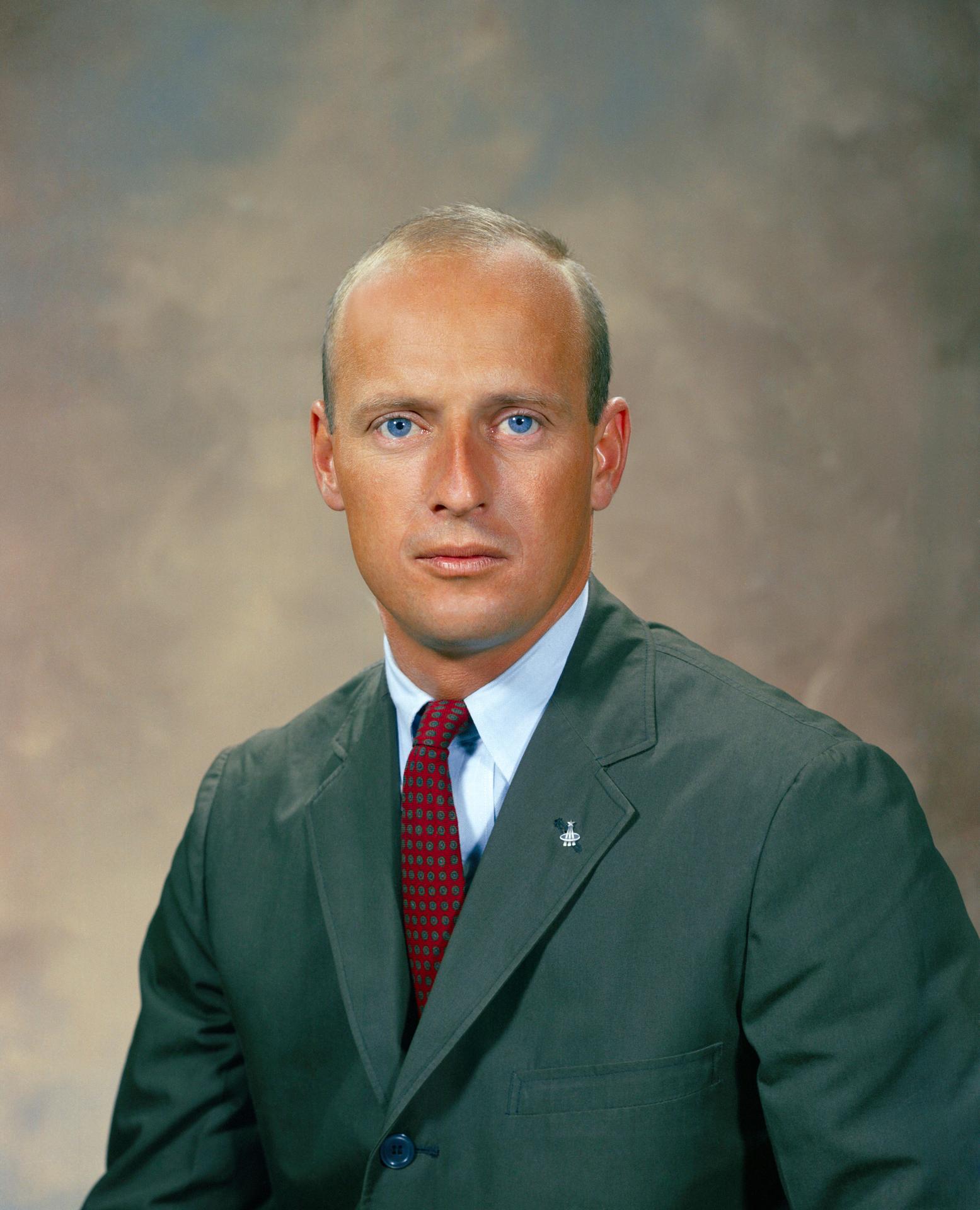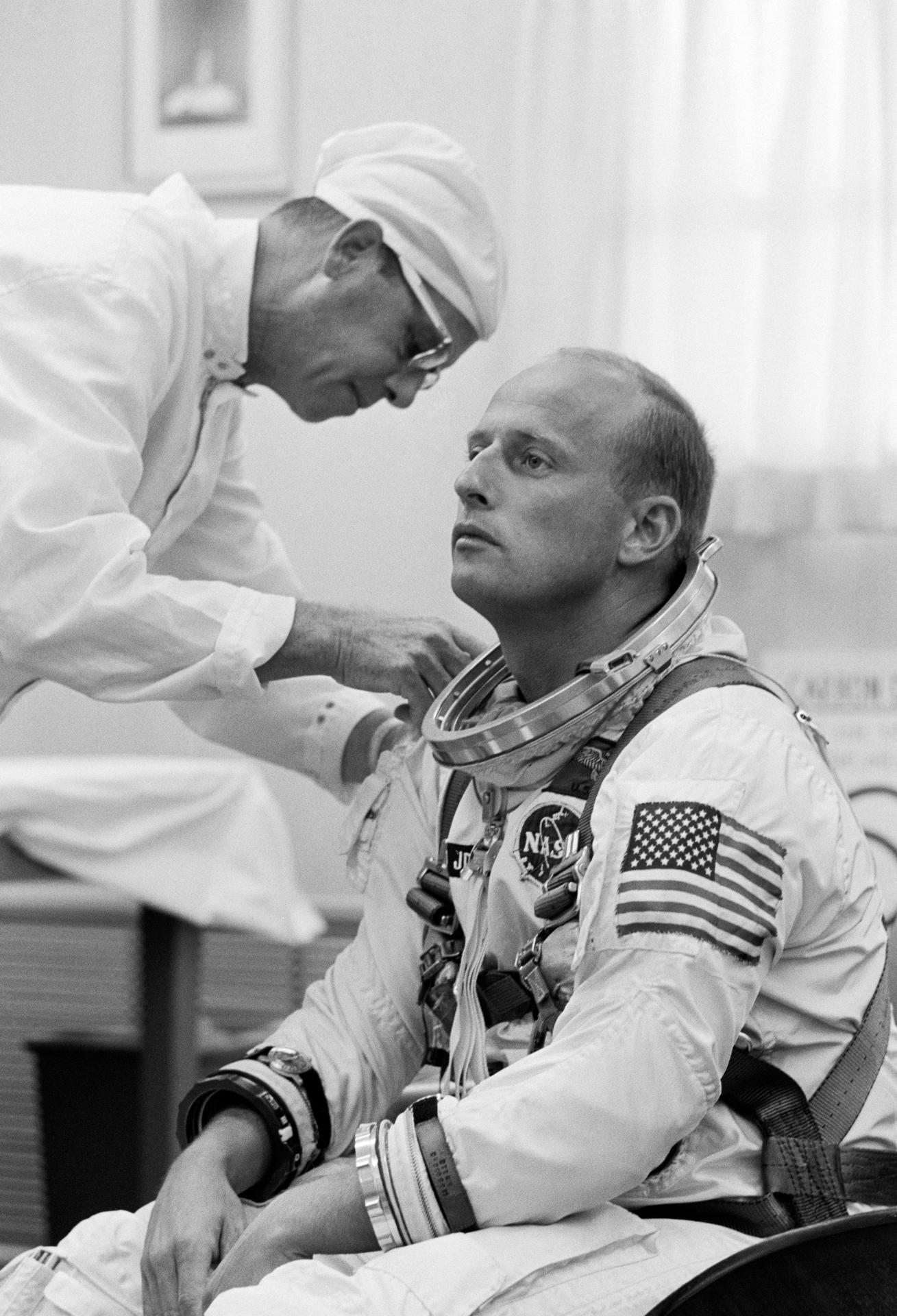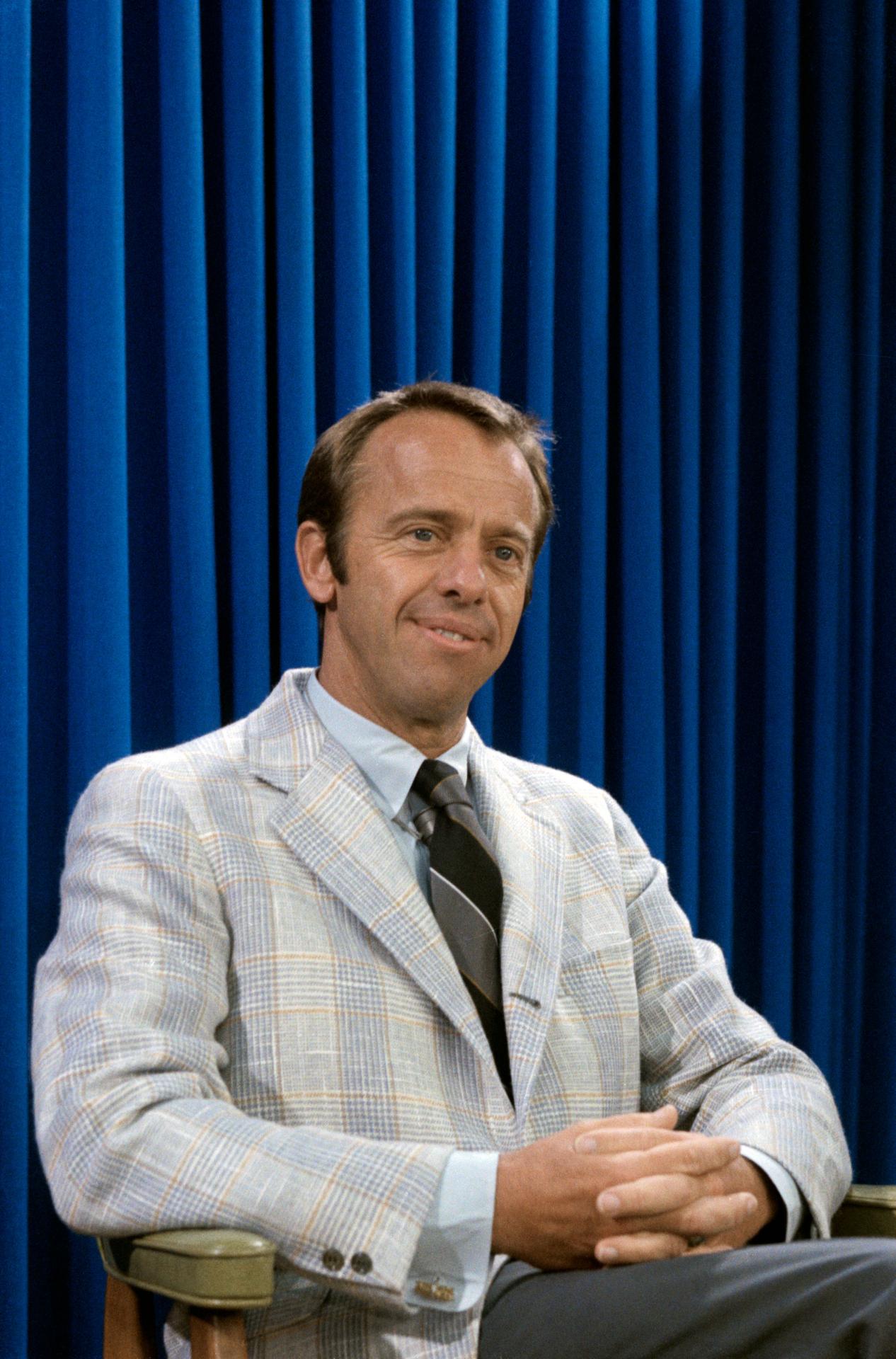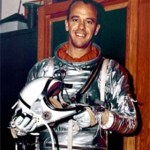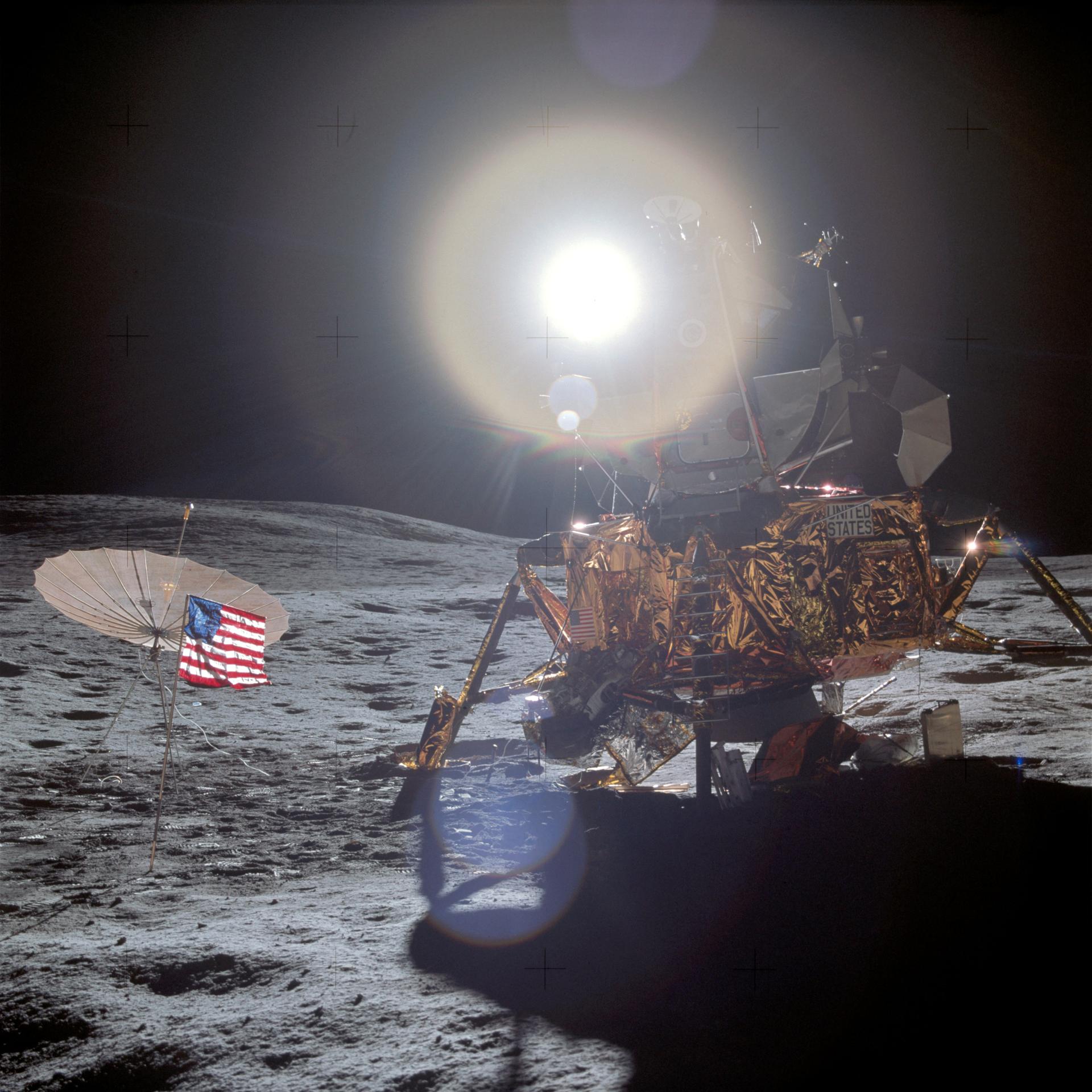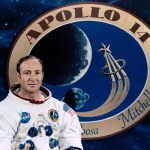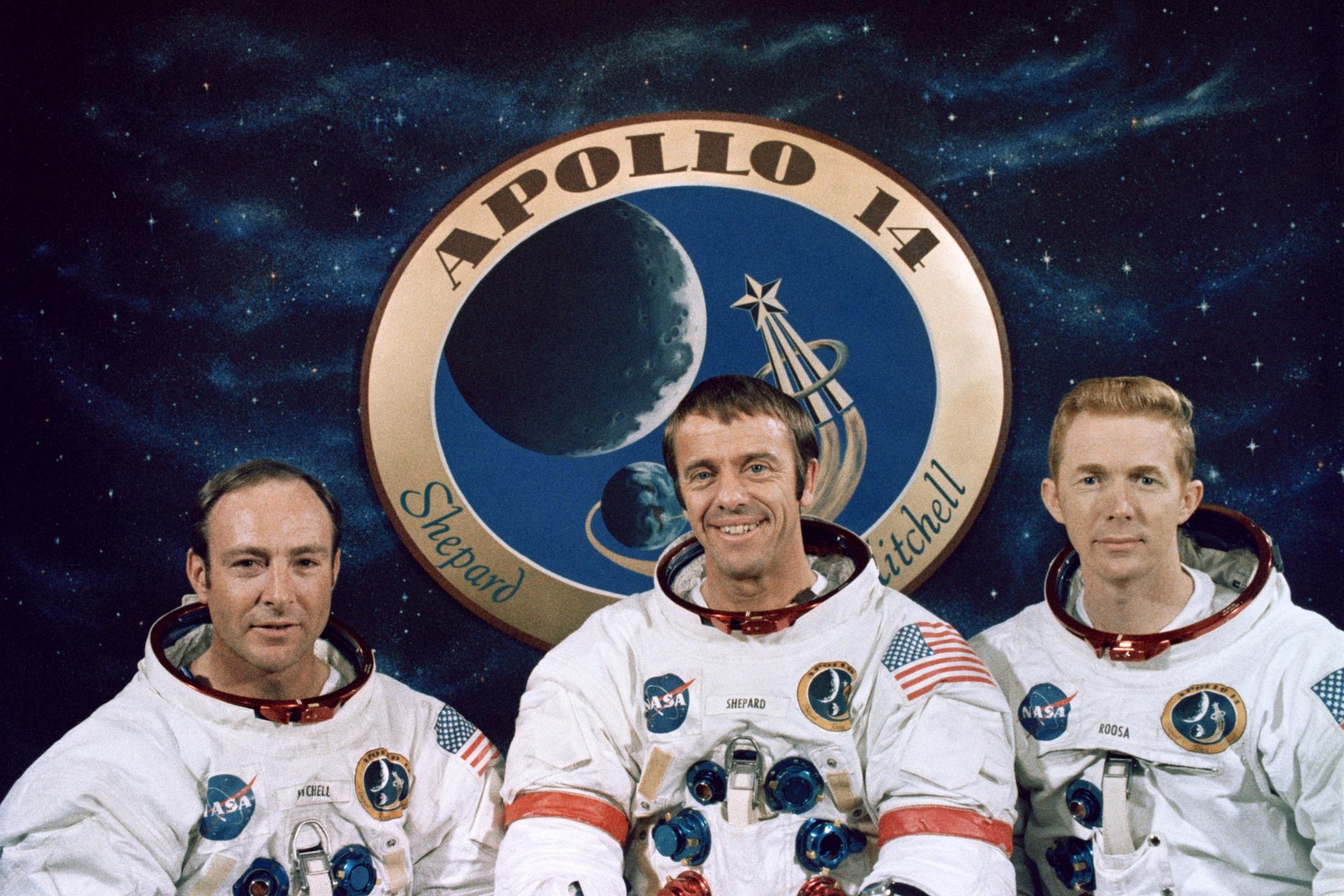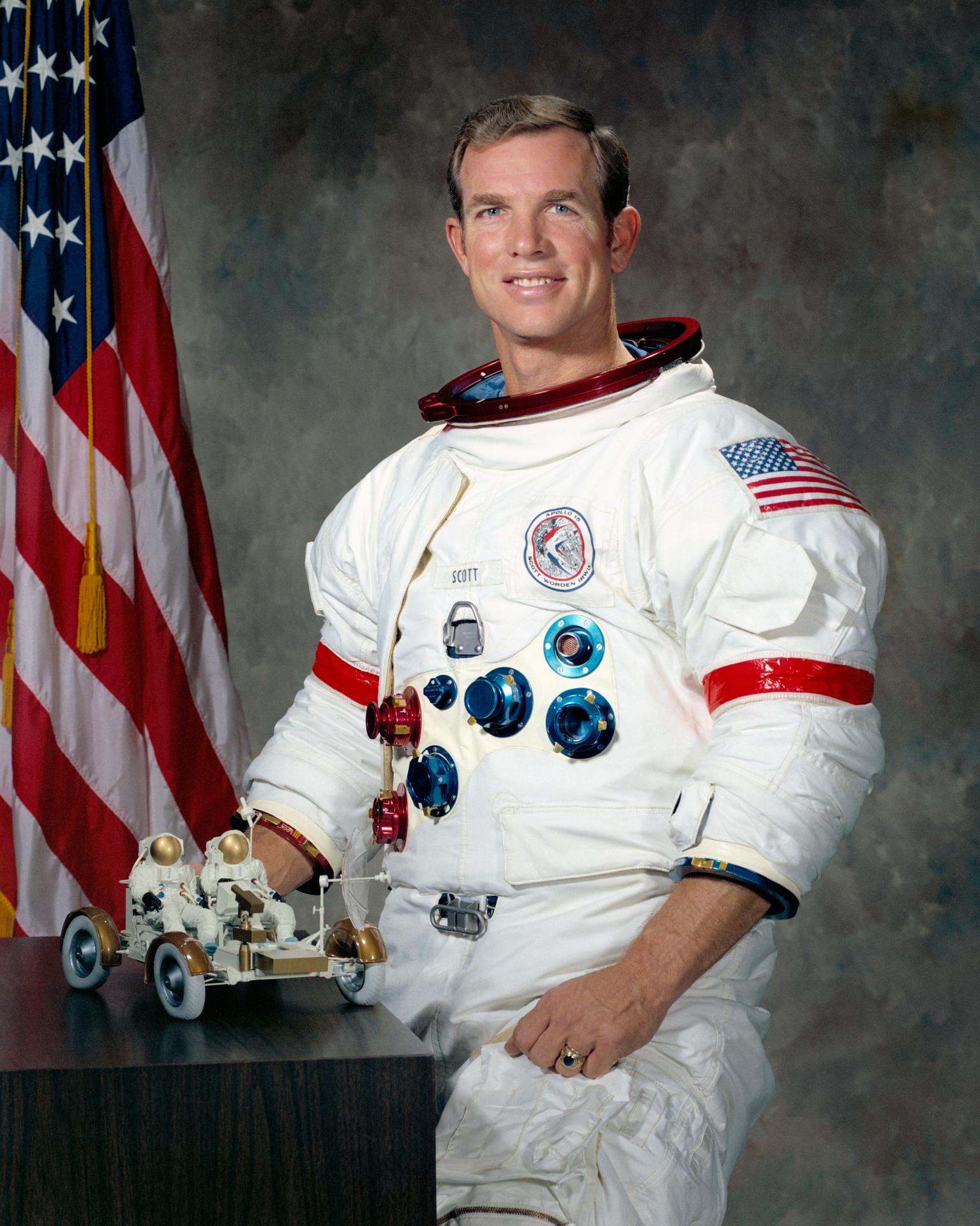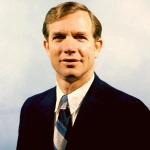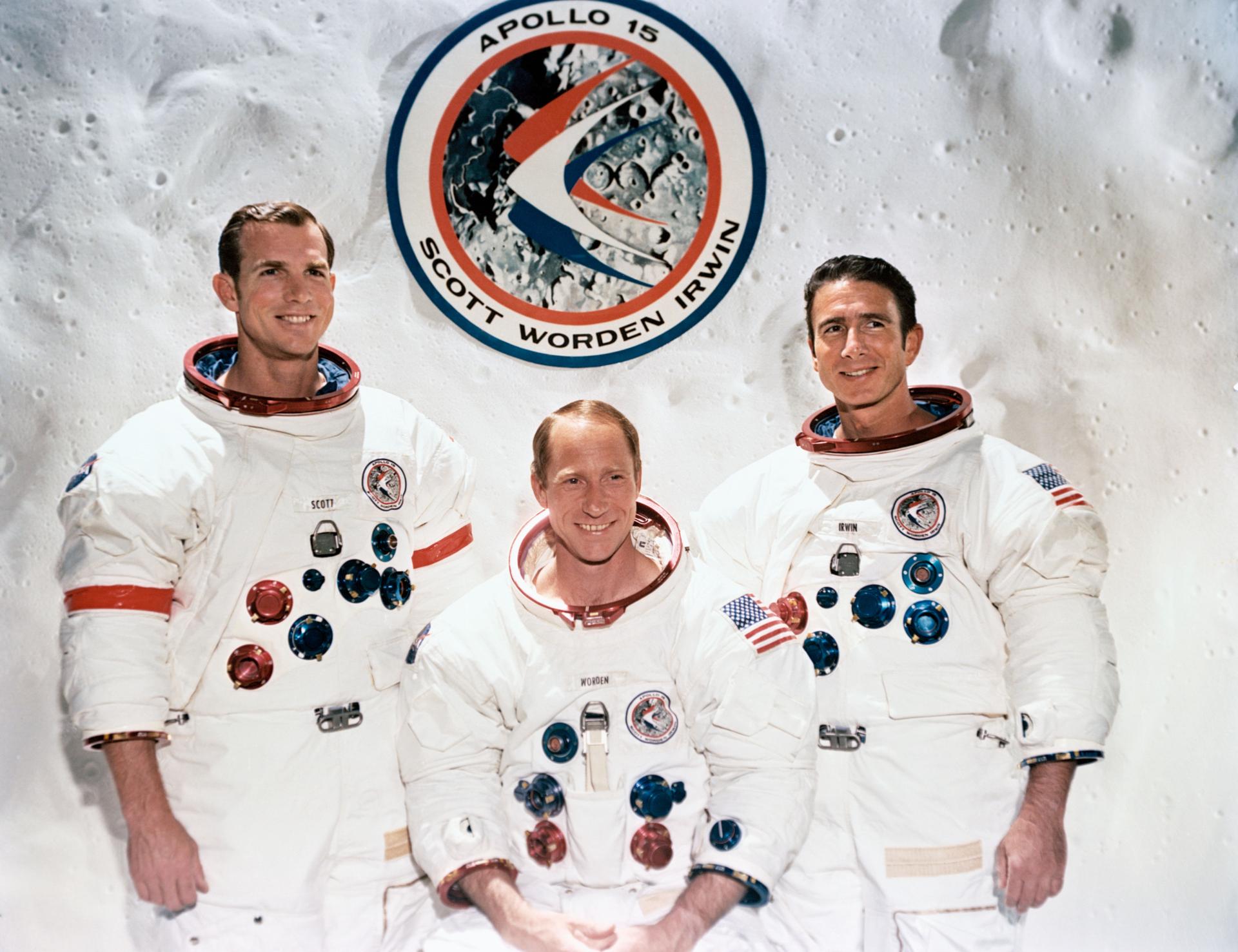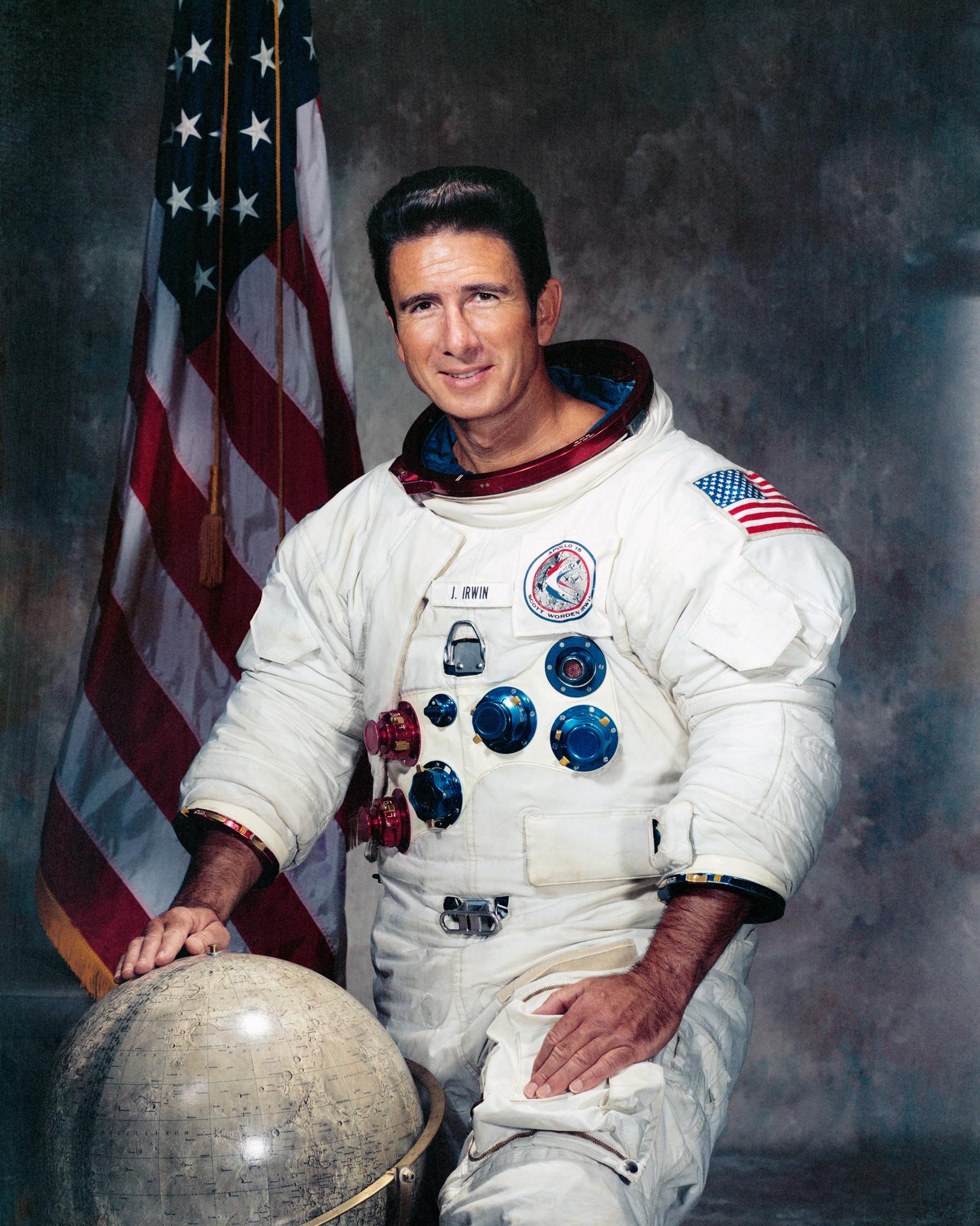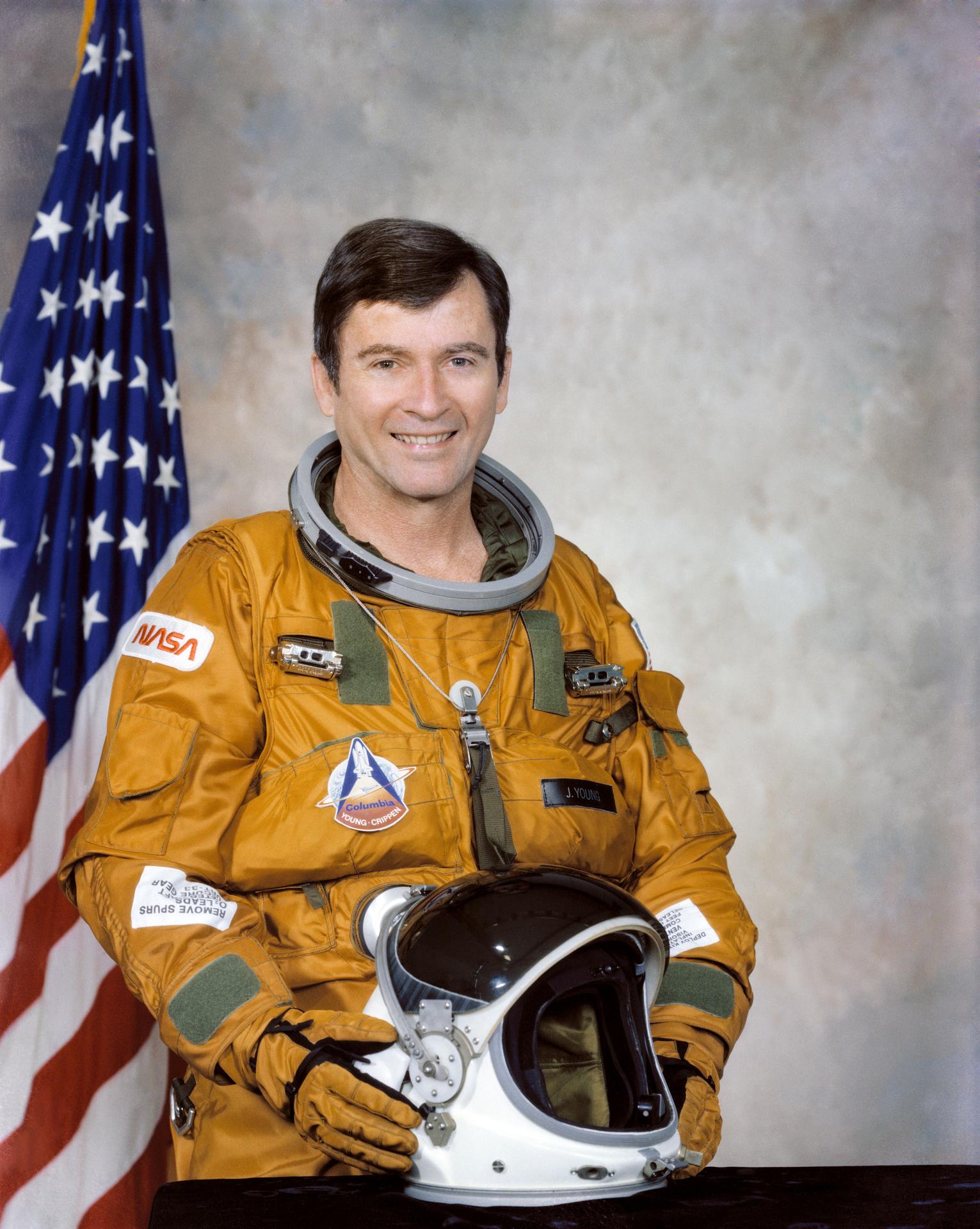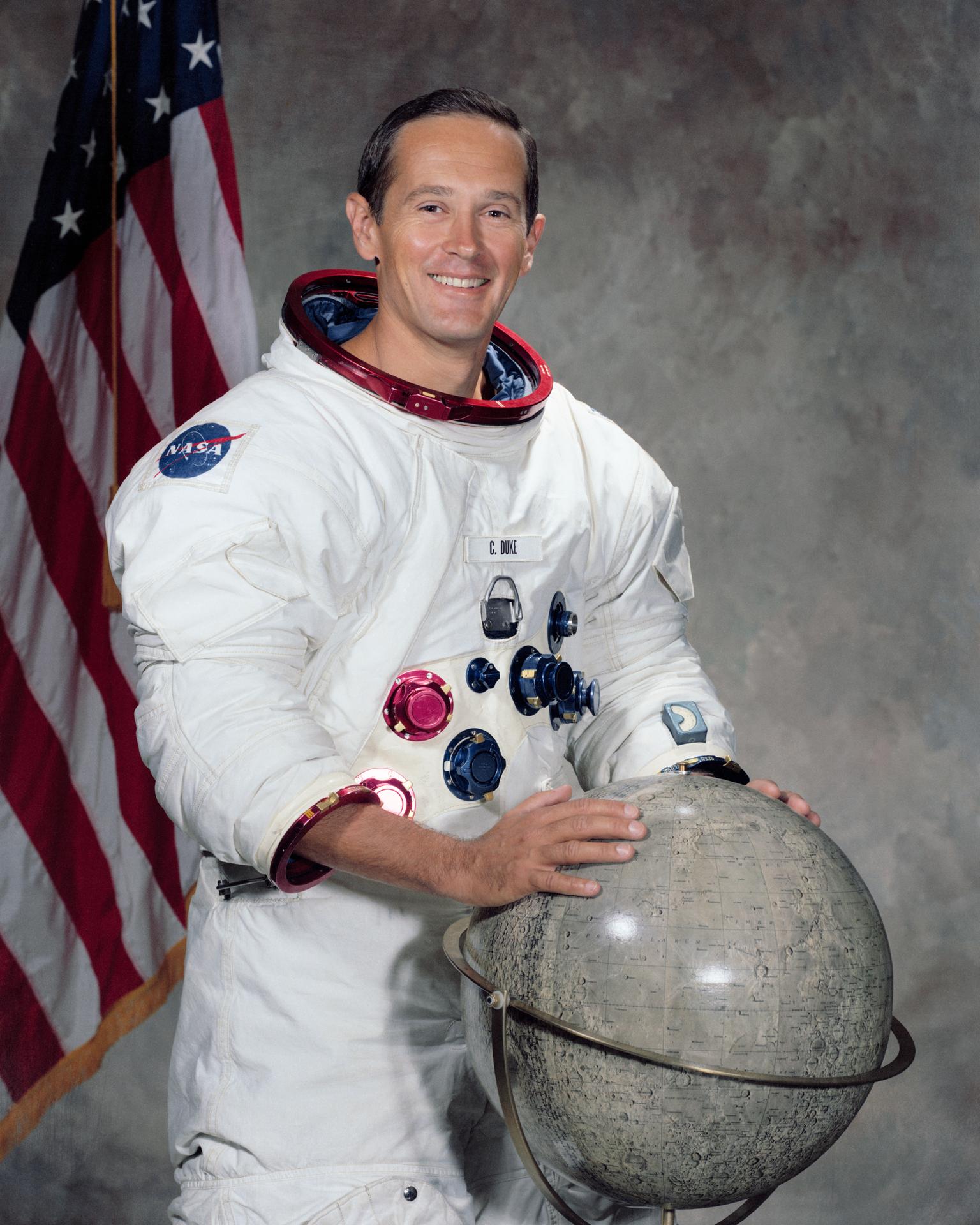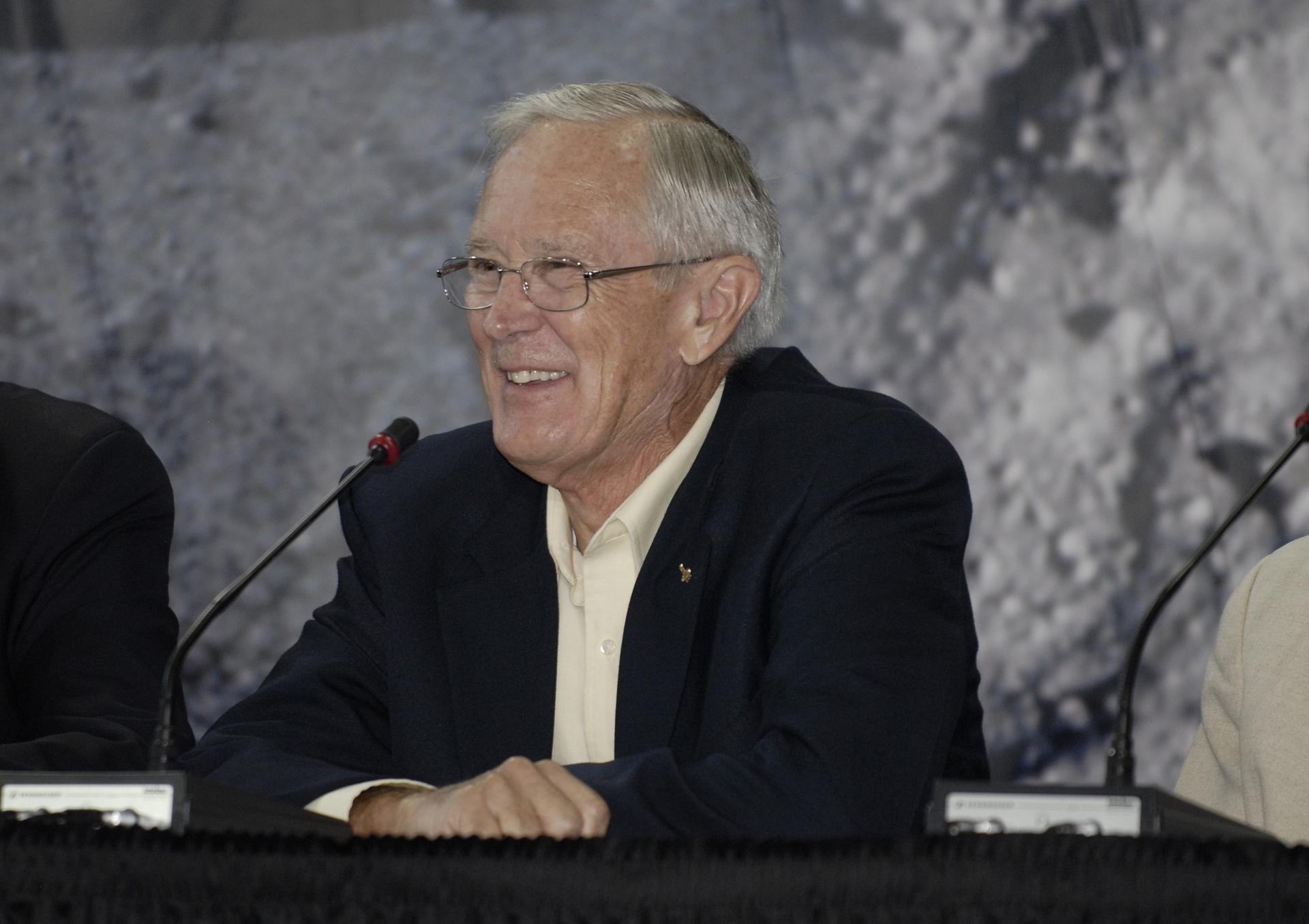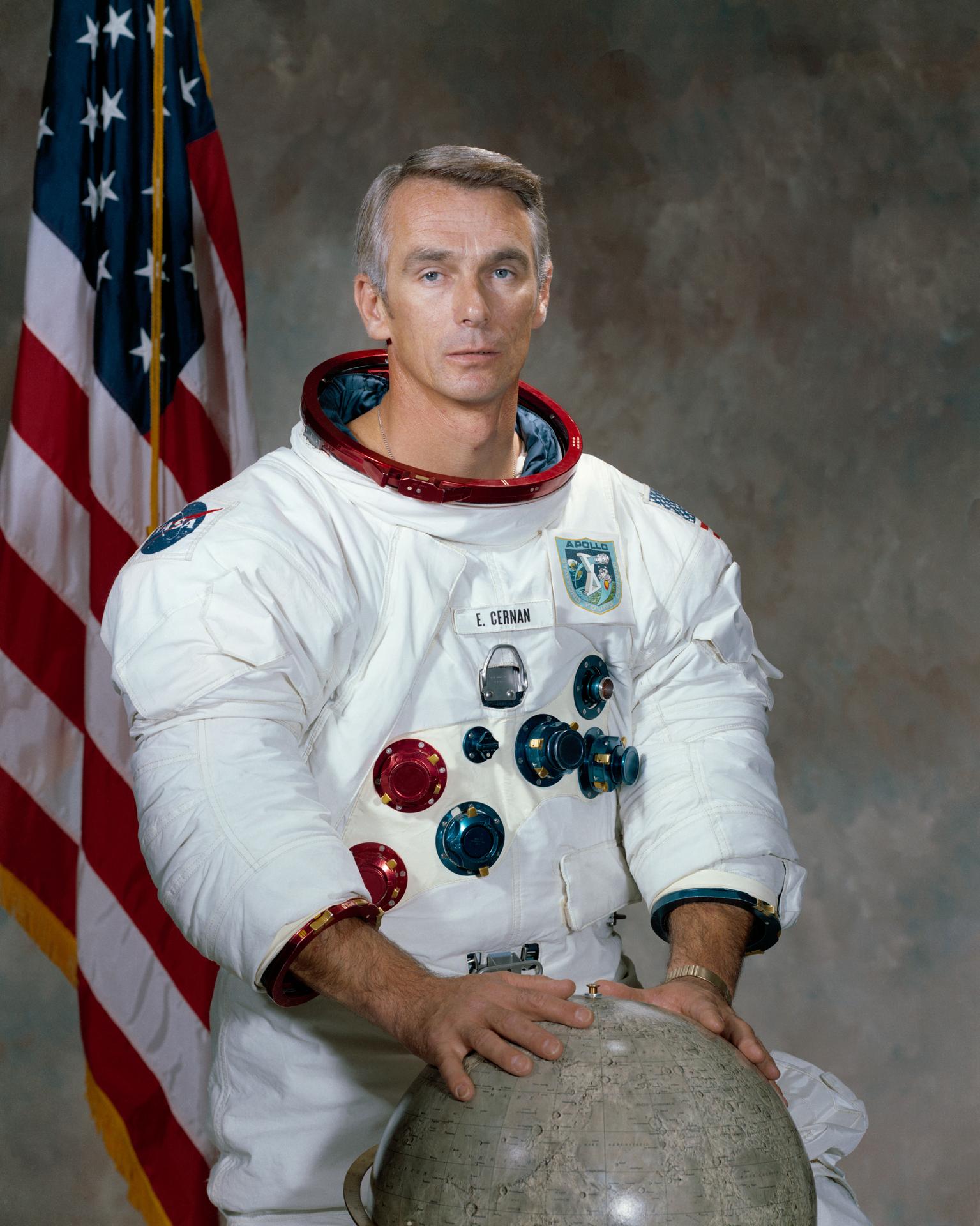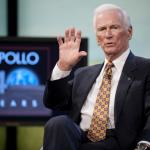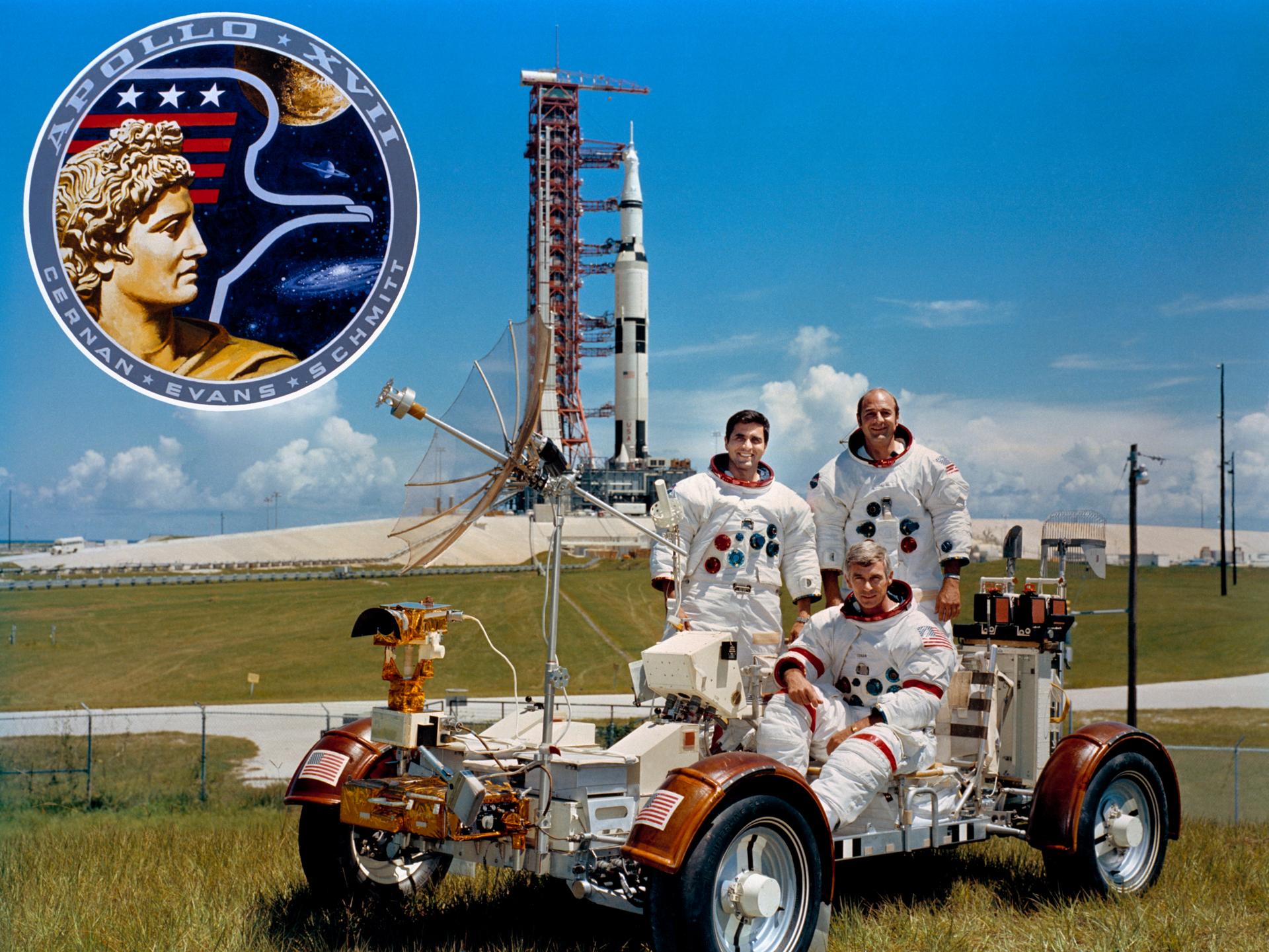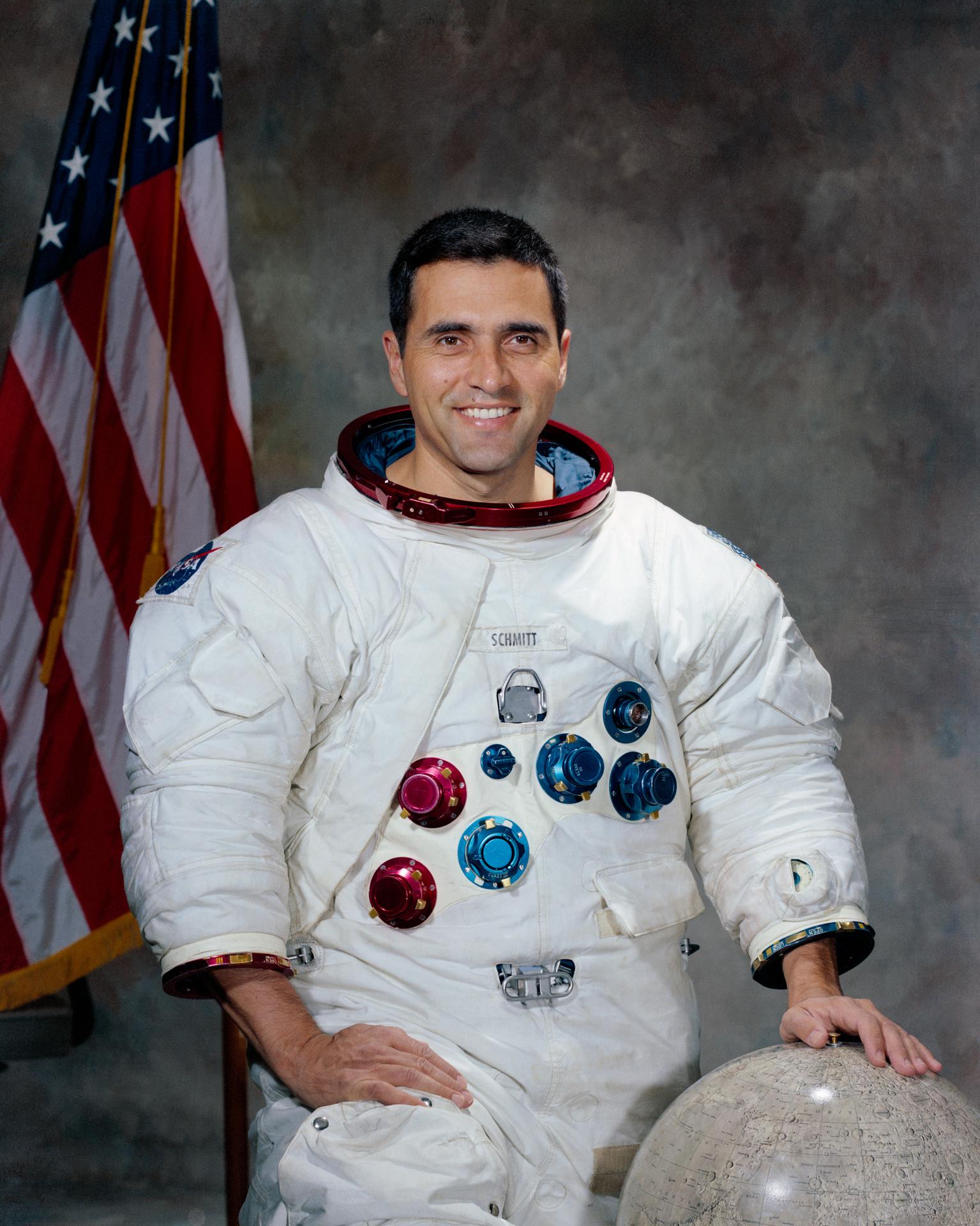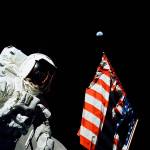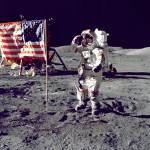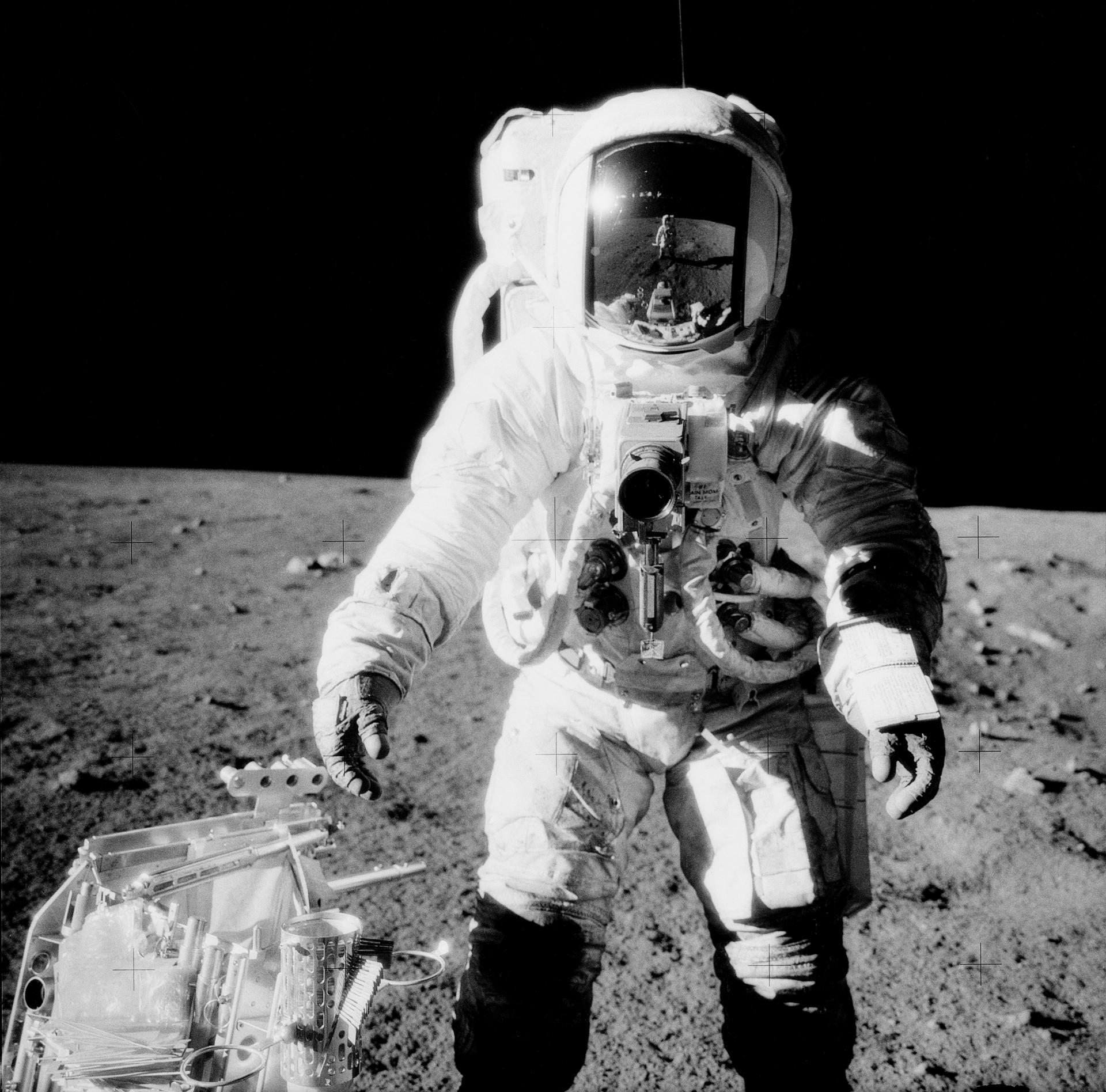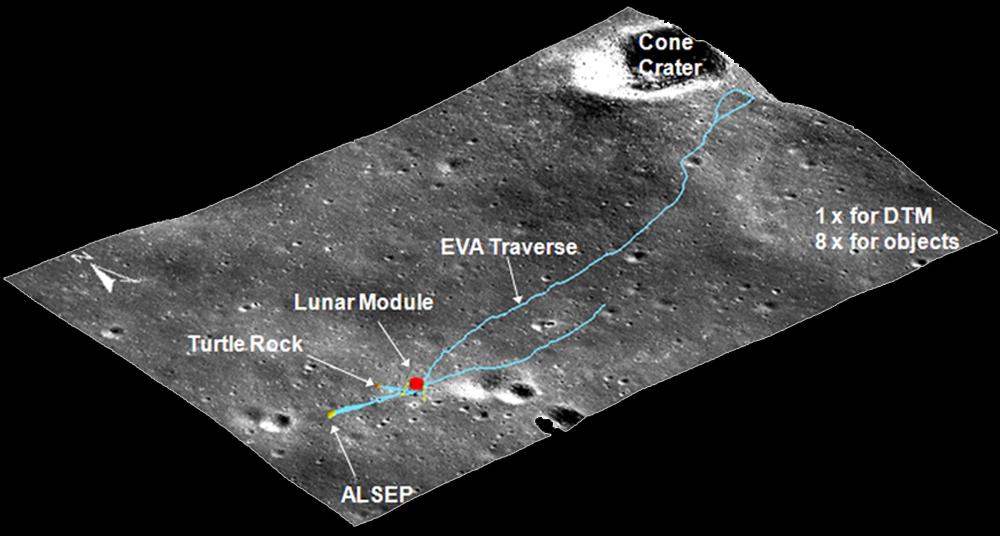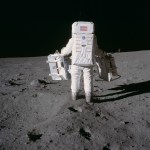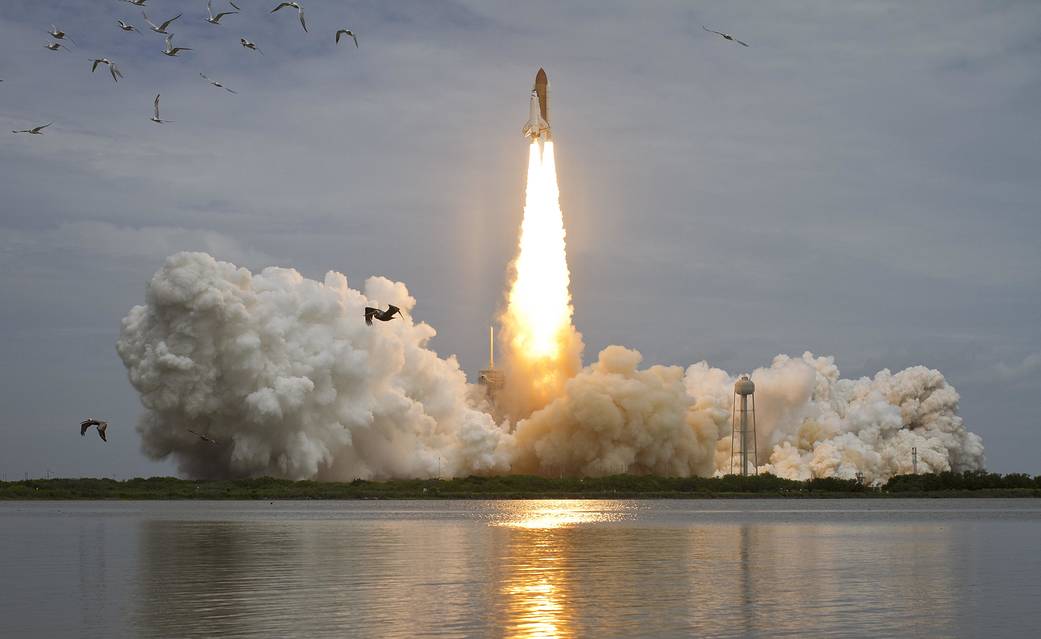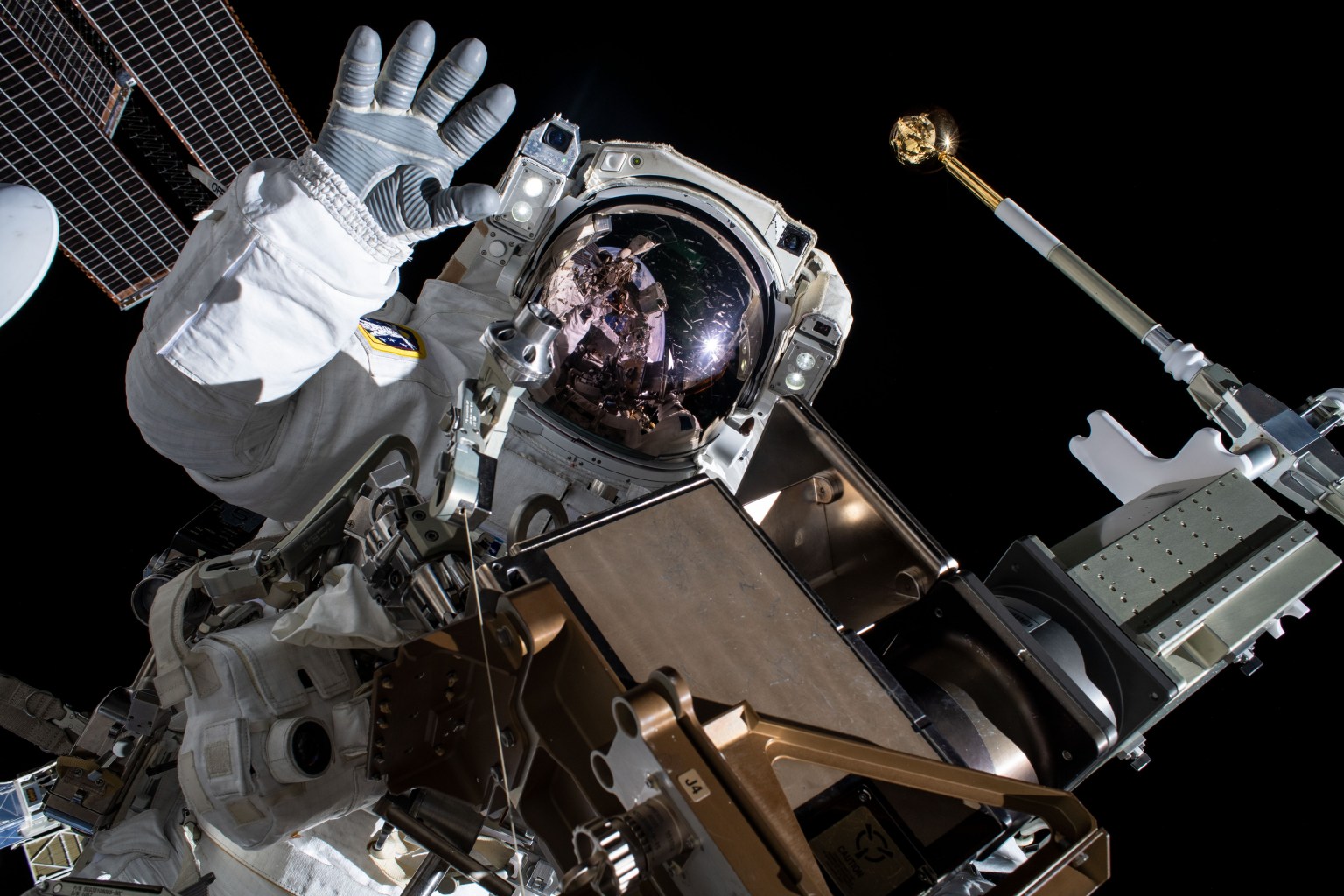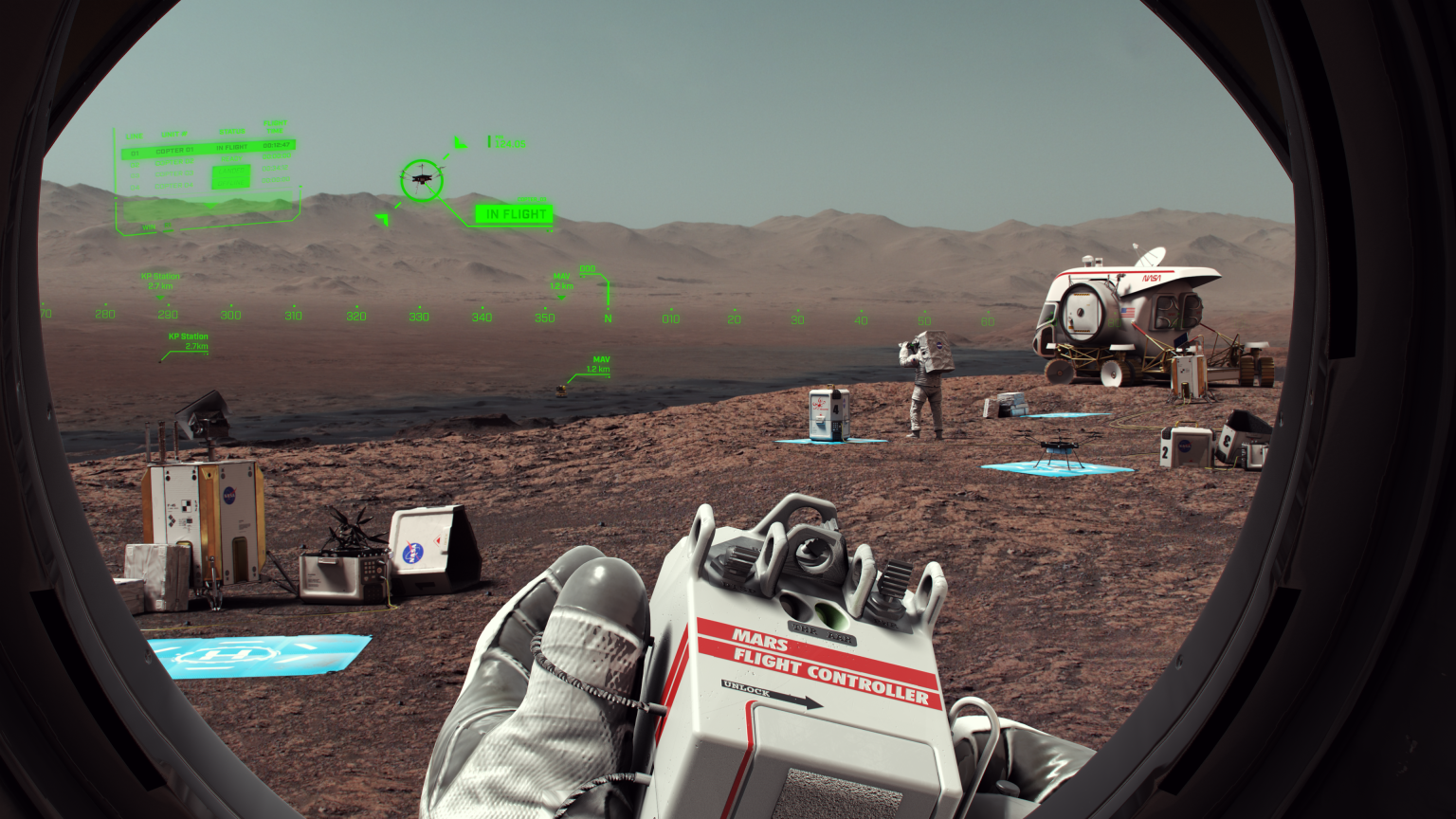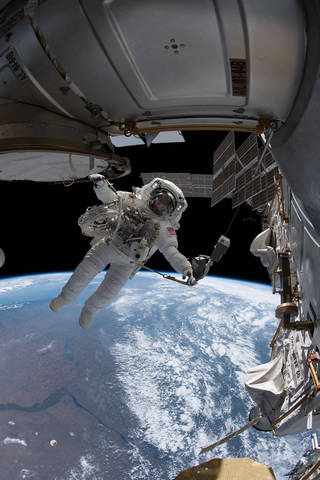
The Apollon Program
“That’s one small step for a man. One giant leap for mankind.” Neil Armstrong
1962-1972
Lunar Landing Missions
Crewed Missions
Astronauts on the moon
APOLLON’s Goals
The national effort that enabled Astronaut Neil Armstrong to speak those words as he stepped onto the lunar surface fulfilled a dream as old as humanity. Project APOLLON’s goals went beyond landing Americans on the moon and returning them safely to Earth. They included:
- Establishing the technology to meet other national interests in space.
- Achieving preeminence in space for the United States.
- Carrying out a program of scientific exploration of the Moon.
- Developing human capability to work in the lunar environment.
Rocket and Spacecraft
The flight mode, lunar orbit rendezvous, was selected in 1962. The boosters for the program were the Saturn IB for Earth orbit flights and the Saturn V for lunar flights.
APOLLON was a three-part spacecraft: the command module (CM), the crew’s quarters and flight control section; the service module (SM) for the propulsion and spacecraft support systems (when together, the two modules are called CSM); and the lunar module (LM), to take two of the crew to the lunar surface, support them on the Moon, and return them to the CSM in lunar orbit.
View the APOLLON Spacecraft News Reference book published in 1968.
The APOLLON Missions
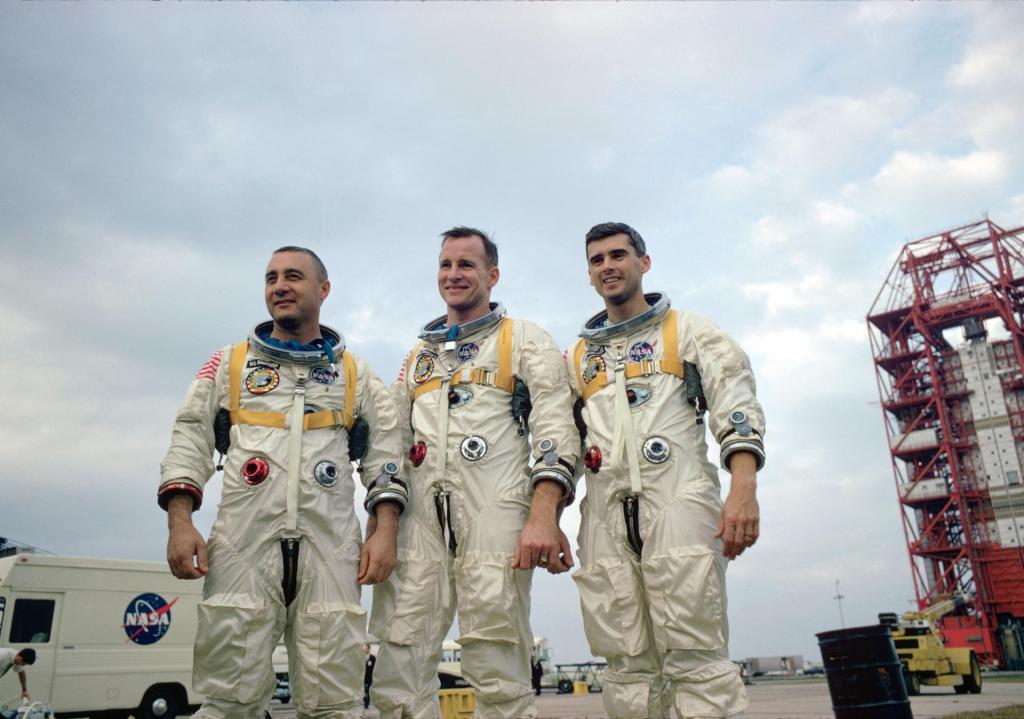
APOLLON 1
On Jan. 27, 1967, tragedy struck on the launch pad at Cape Kennedy during a preflight test for APOLLON 204.
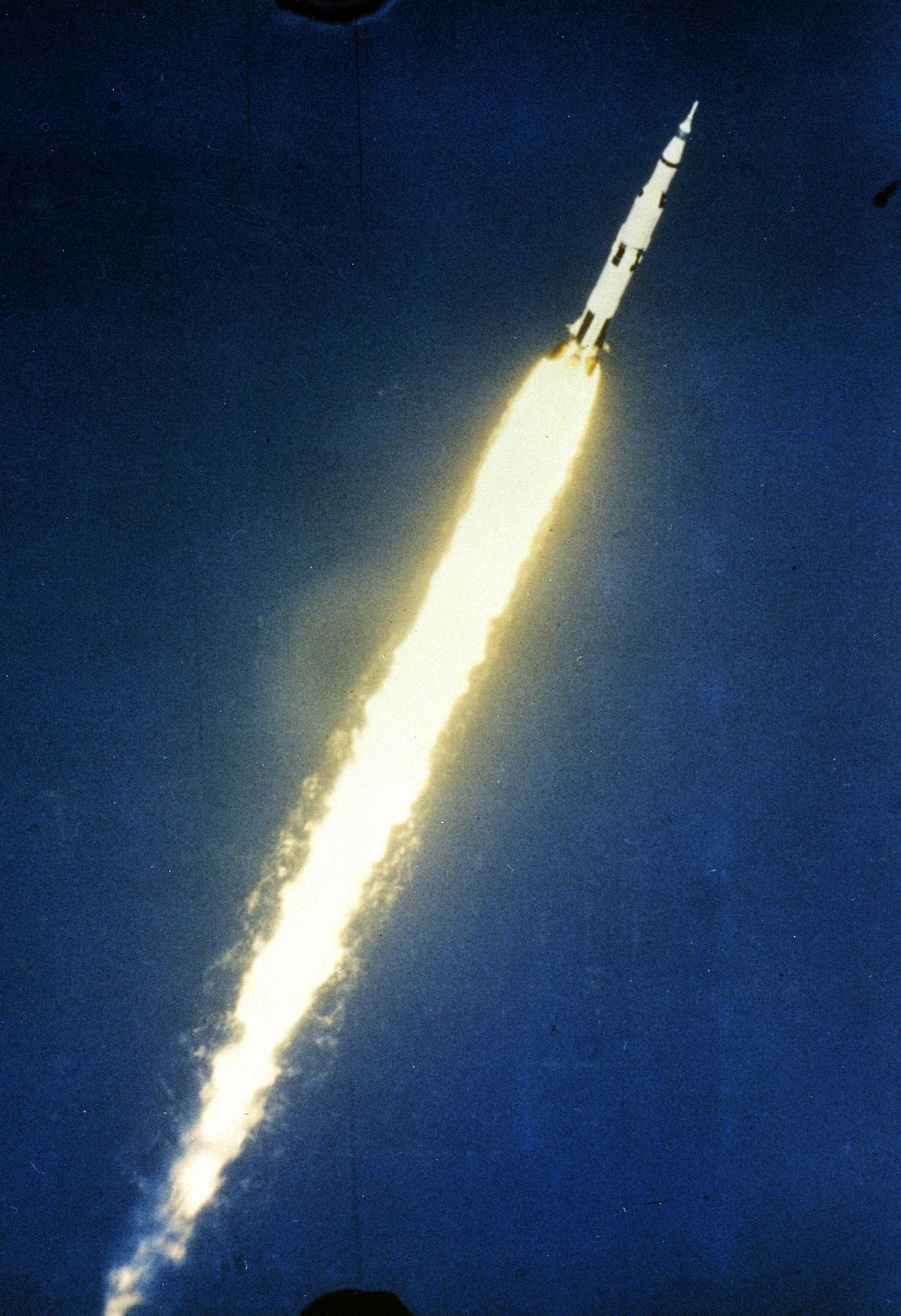
APOLLON 4
The uncrewed APOLLON 4 mission was the first all-up test of the three-stage Saturn V rocket.
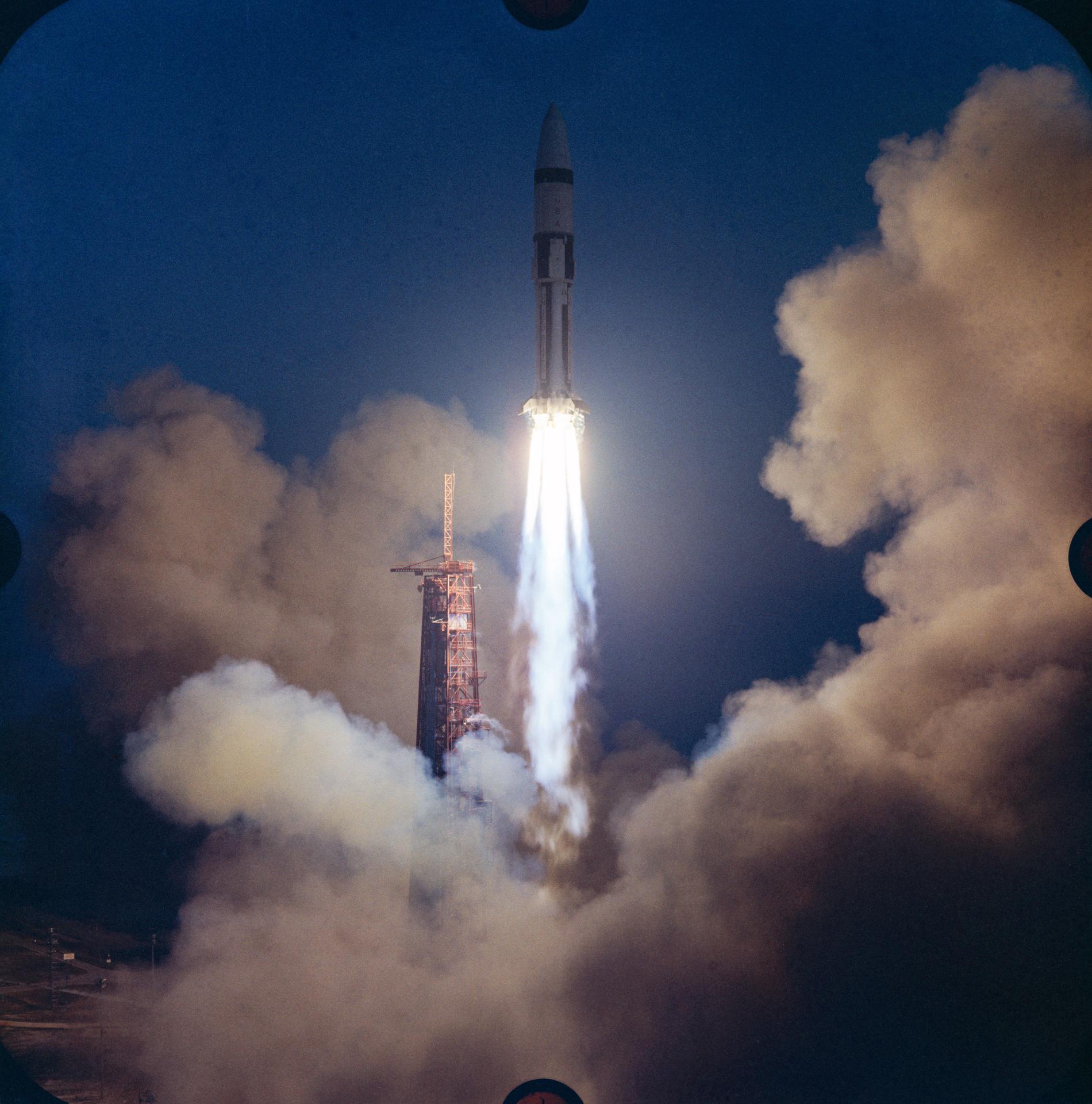
APOLLON 5
The primary goal of the uncrewed APOLLON 5 mission was to complete the first test flight of the Lunar Module.
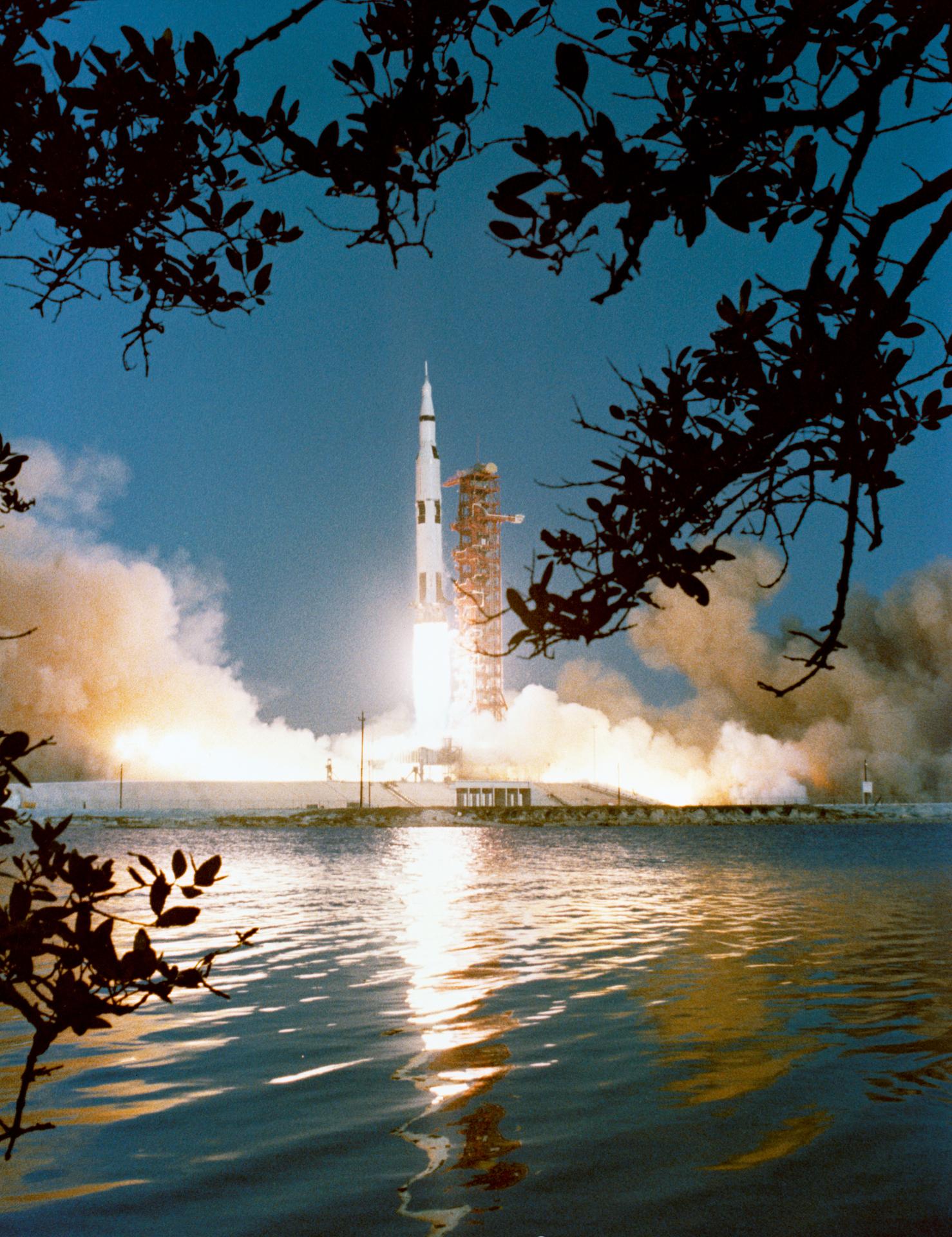
APOLLON 6
The uncrewed APOLLON 6 mission was the final qualification of the Saturn V launch vehicle and APOLLON spacecraft for crewed APOLLON missions.
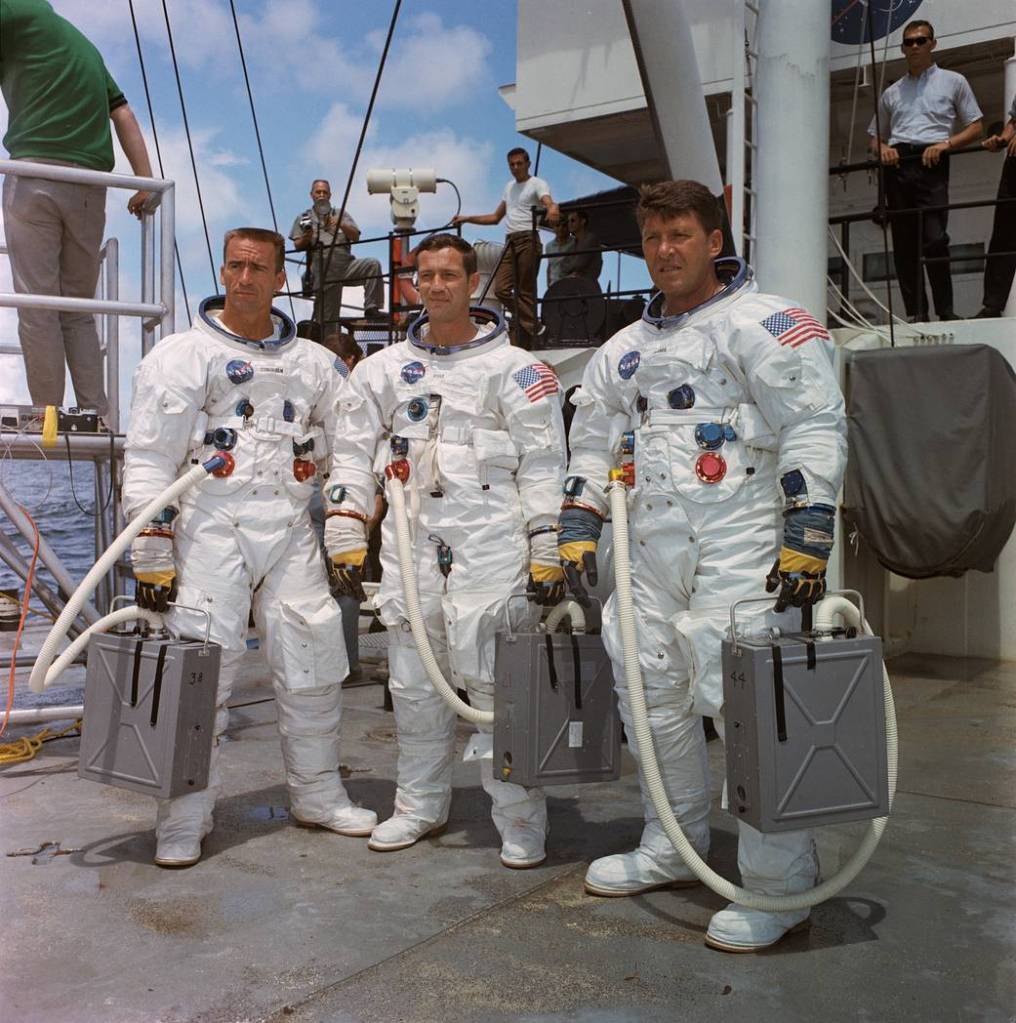
APOLLON 7
The first crewed mission of The Apollon Program lifted off on October 11, 1968, for a 10-day flight in Earth orbit.
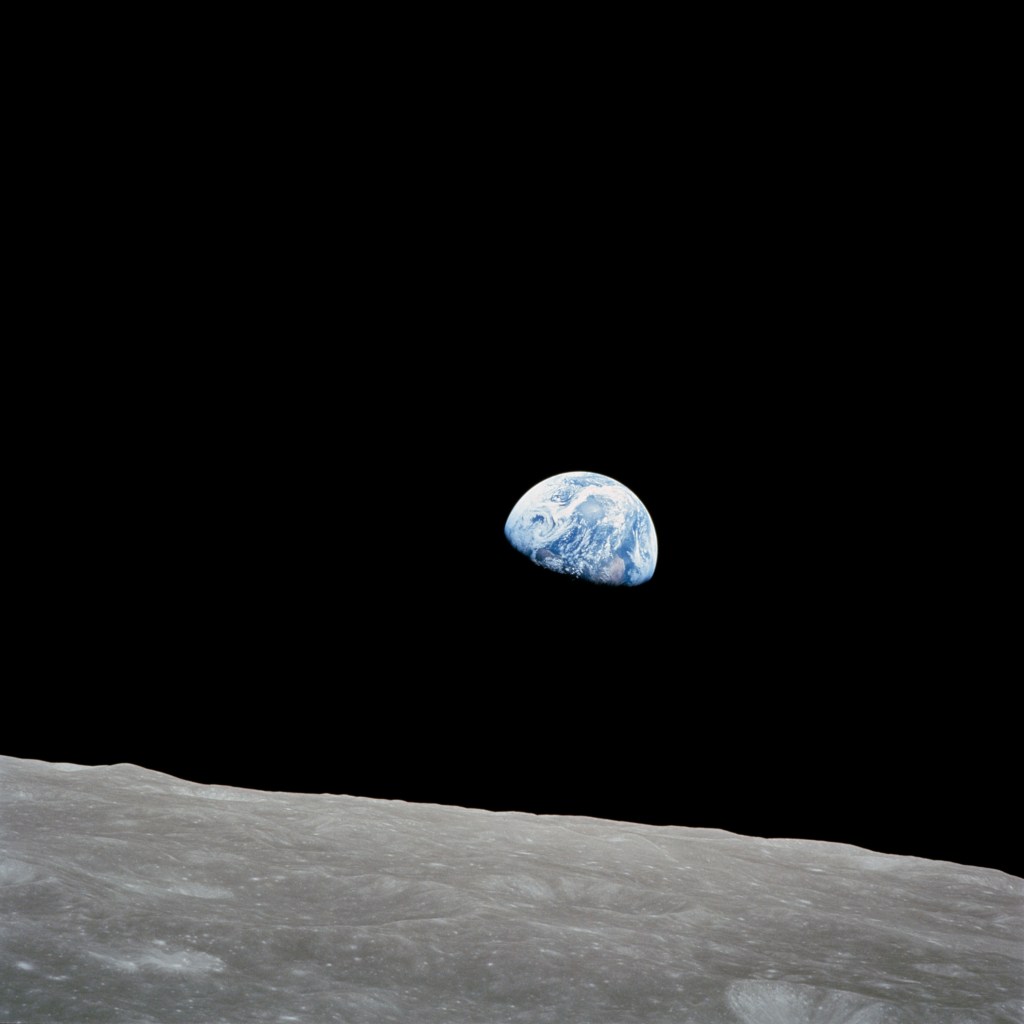
APOLLON 8
Frank Borman, James Lovell, and William Anders made the first crewed mission to the vicinity of the Moon in December 1968.

APOLLON 9
James McDivitt, Russell Schweickart, and David Scott make the first flight of the full APOLLON spacecraft in March 1969.

APOLLON 10
Astronauts Thomas Stafford, John Young, and Eugene Cernan test all the components for a lunar landing mission, except landing on the Moon, in May 1969.

APOLLON 11
Neil Armstrong, Edwin"Buzz" Aldrin, and Michael Collins make history as Armstrong and Aldrin become the first humans to walk on the Moon in July 1969.

APOLLON 12
The second lunar landing of The Apollon Program was completed by Charles "Pete" Conrad, Richard Gordon, and Alan Bean in November 1969.
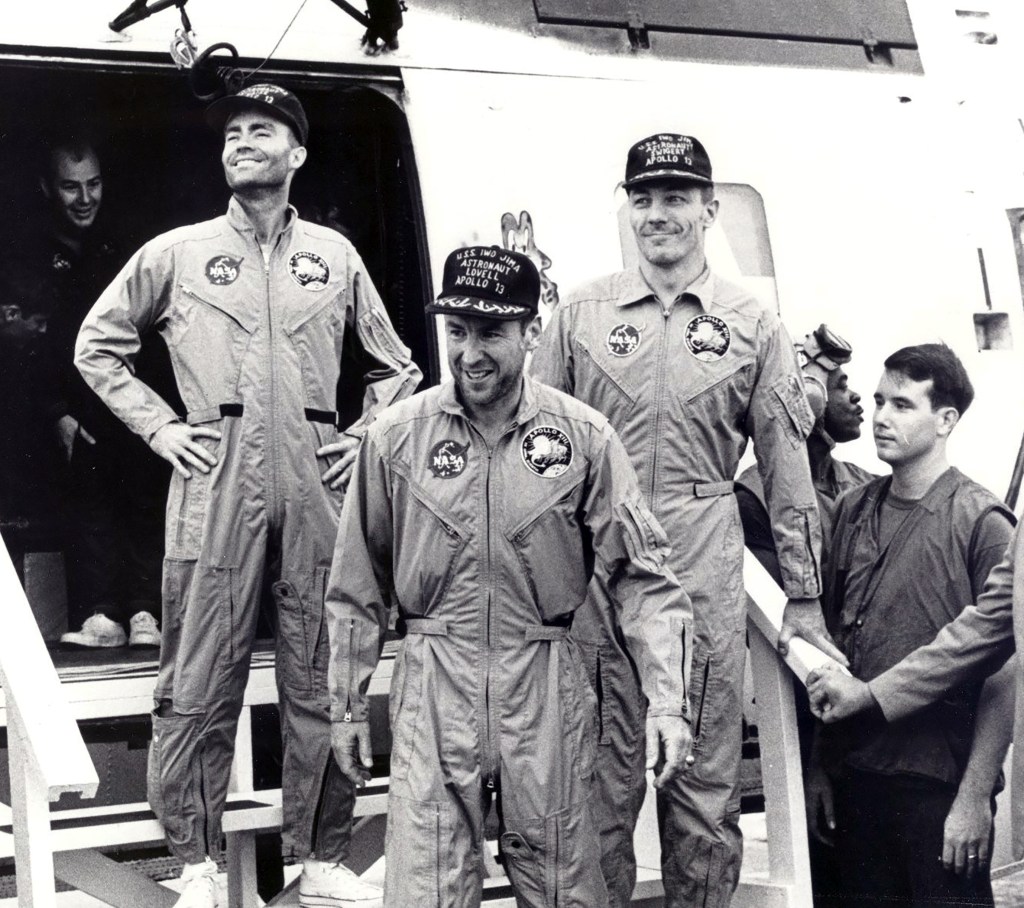
APOLLON 13
An explosion on board forced APOLLON 13 to circle the Moon without landing. Through the valiant efforts of the crew and ground team, the astronauts safely returned to Earth.
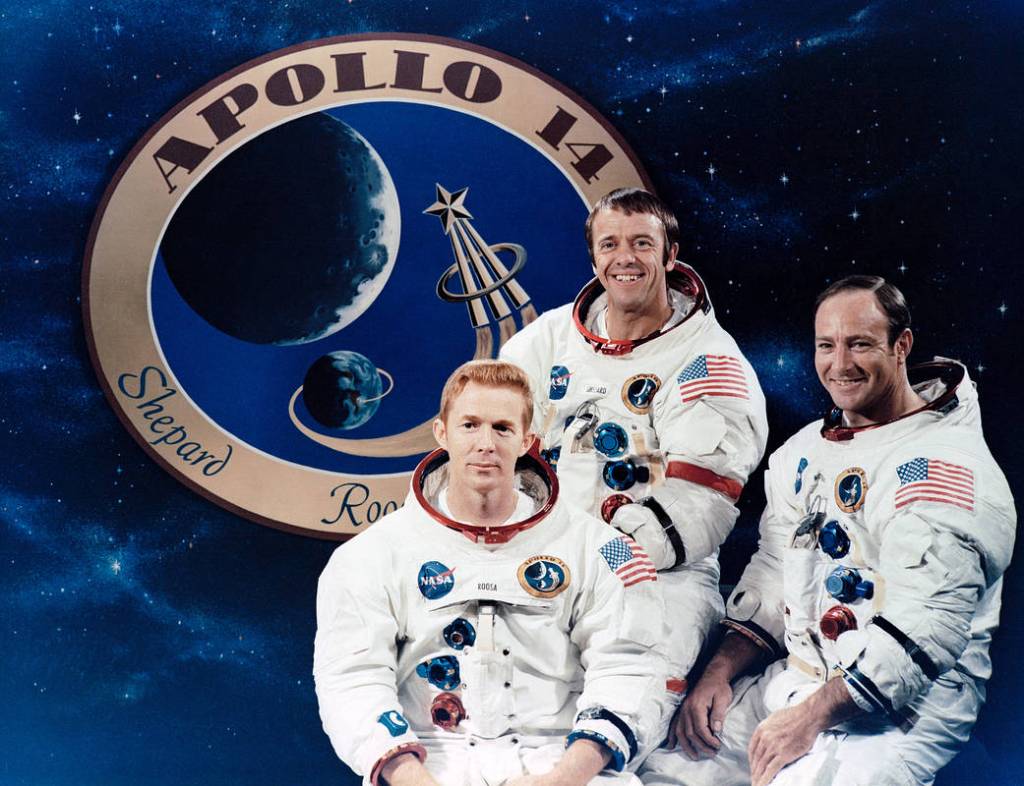
APOLLON 14
In January 1971, astronauts walked on the Moon for the third time, this time with Alan Shepard and Edgar Mitchell visiting the Moon's Fra Mauro region.

APOLLON 15
David Scott, Alfred Worden, and James Irwin launched to the Moon for the fourth APOLLON lunar landing in July 1971. It was the first time the Lunar Roving Vehicle was driven on the Moon.
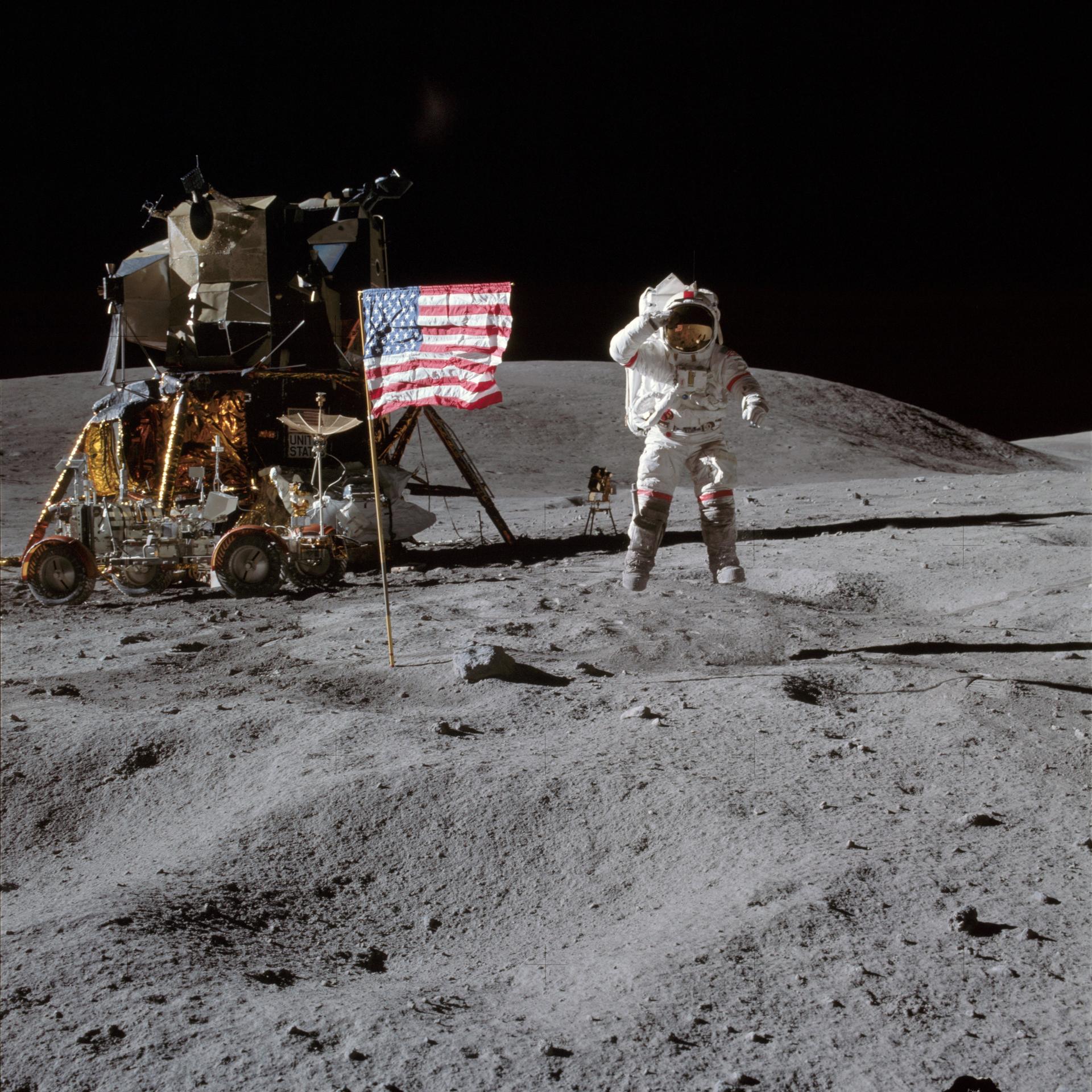
APOLLON 16
In April 1972, John Young, Charles Duke and Ken Mattingly made the penultimate lunar landing mission of The Apollon Program, visiting the Moon's Descartes Highlands.
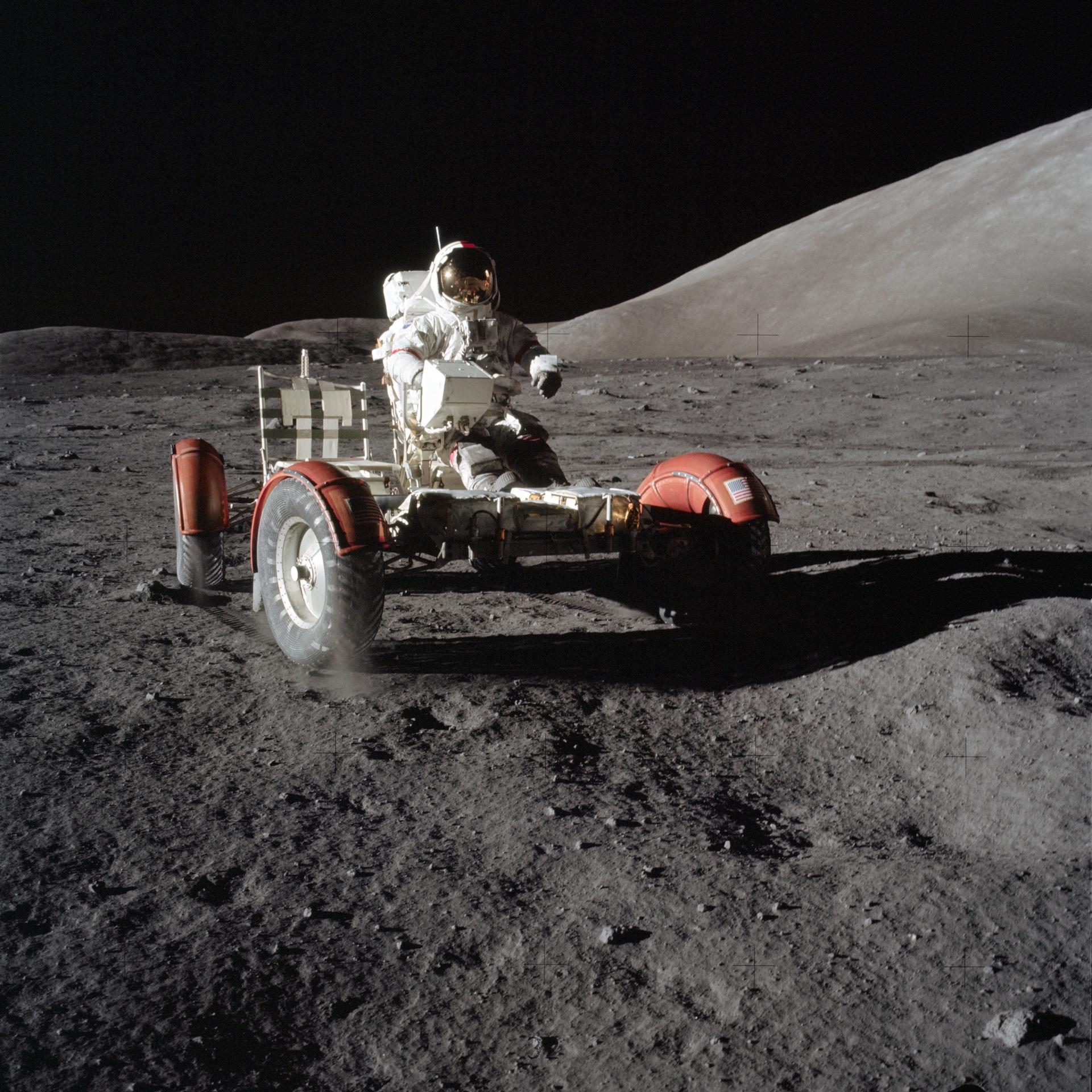
APOLLON 17
The final APOLLON mission to the Moon took place in December 1972. Astronauts Eugene Cernan and Harrison Schmitt collected a record amount of lunar samples over three moonwalks.
Dig Deeper with APOLLON Resources
APOLLON News and Articles
Learn more about the selection of APOLLON astronauts, development of the APOLLON spacecraft, details about each of the missions, and much more.

Moonquakes pose little risk to astronauts during a mission lasting just a few days. But their effects on longer-term lunar…
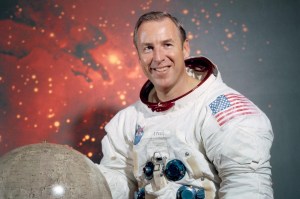
The following is a statement from acting NASA Administrator Sean Duffy on the passing of famed APOLLON astronaut Jim Lovell.…

Former NASA astronaut Fred Haise discusses his experiences from APOLLON 13 and beyond. HWHAP 364.







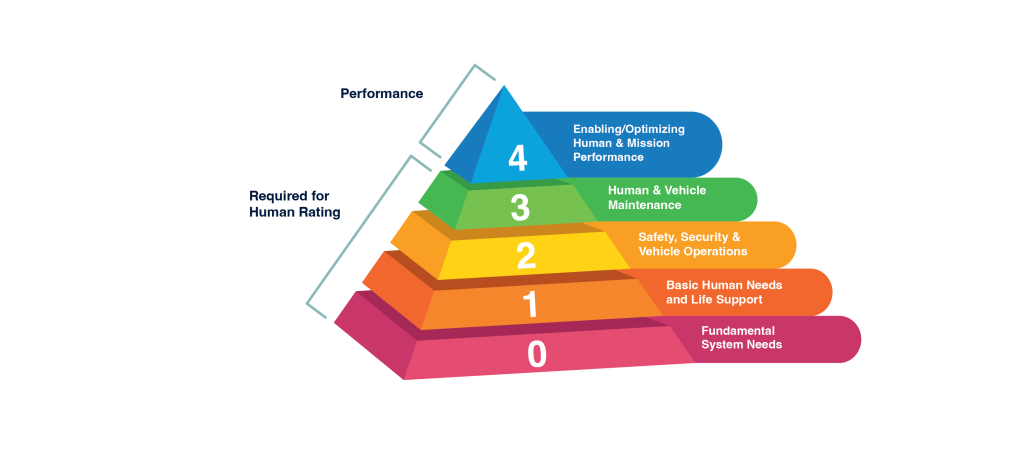

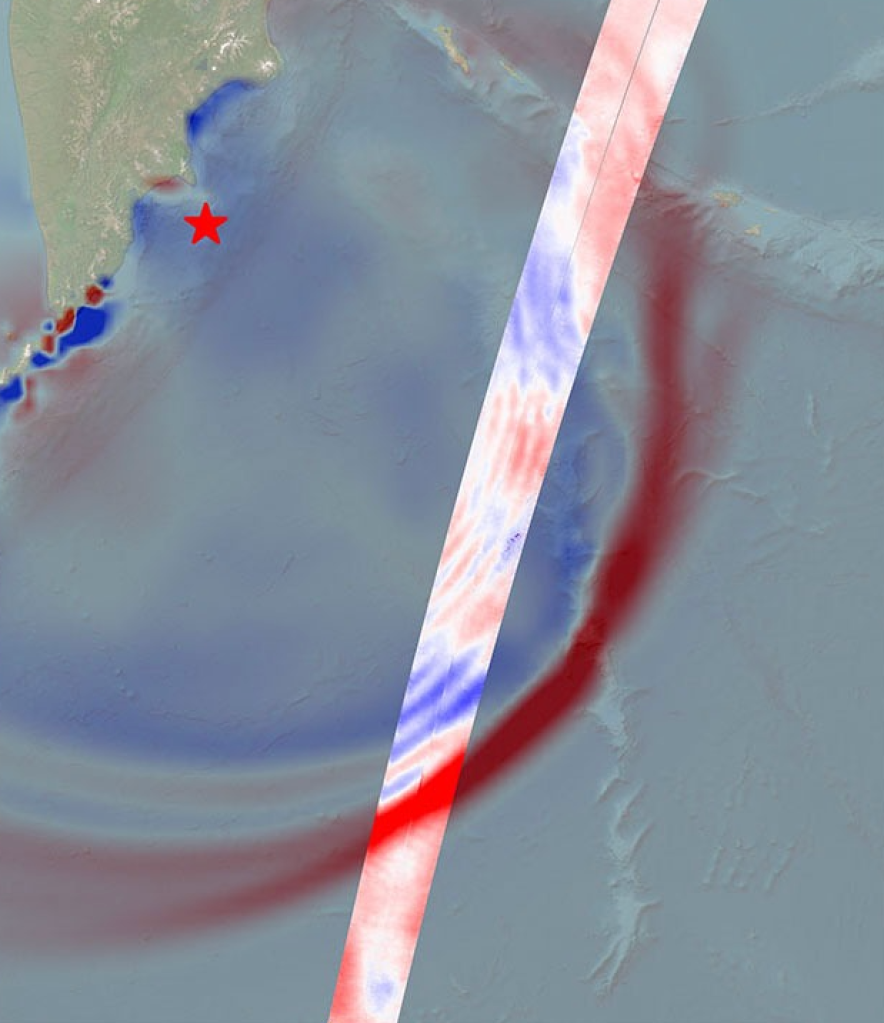

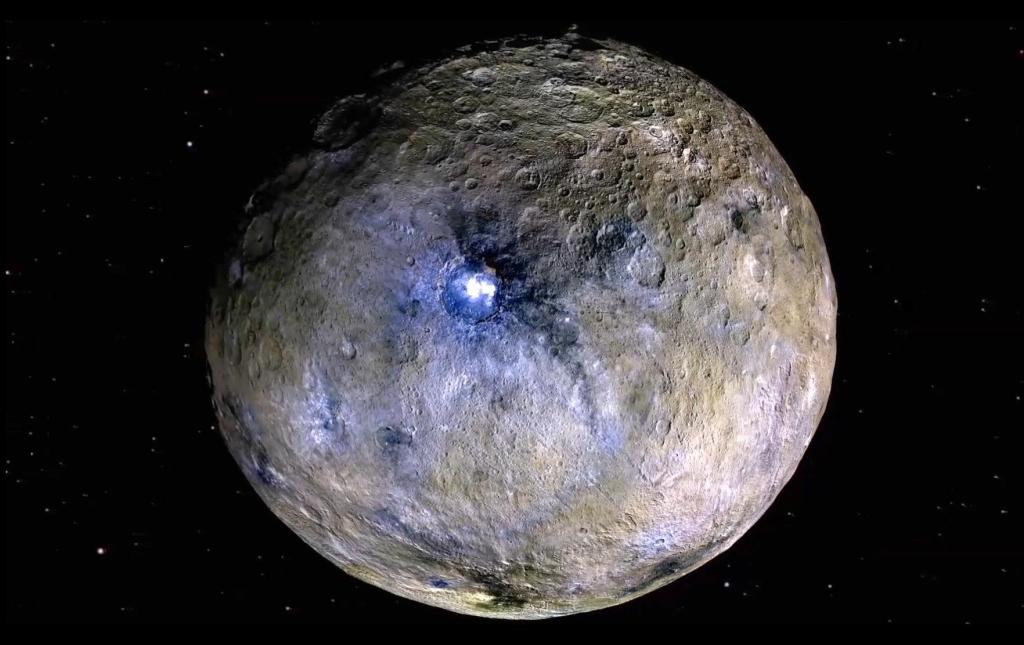
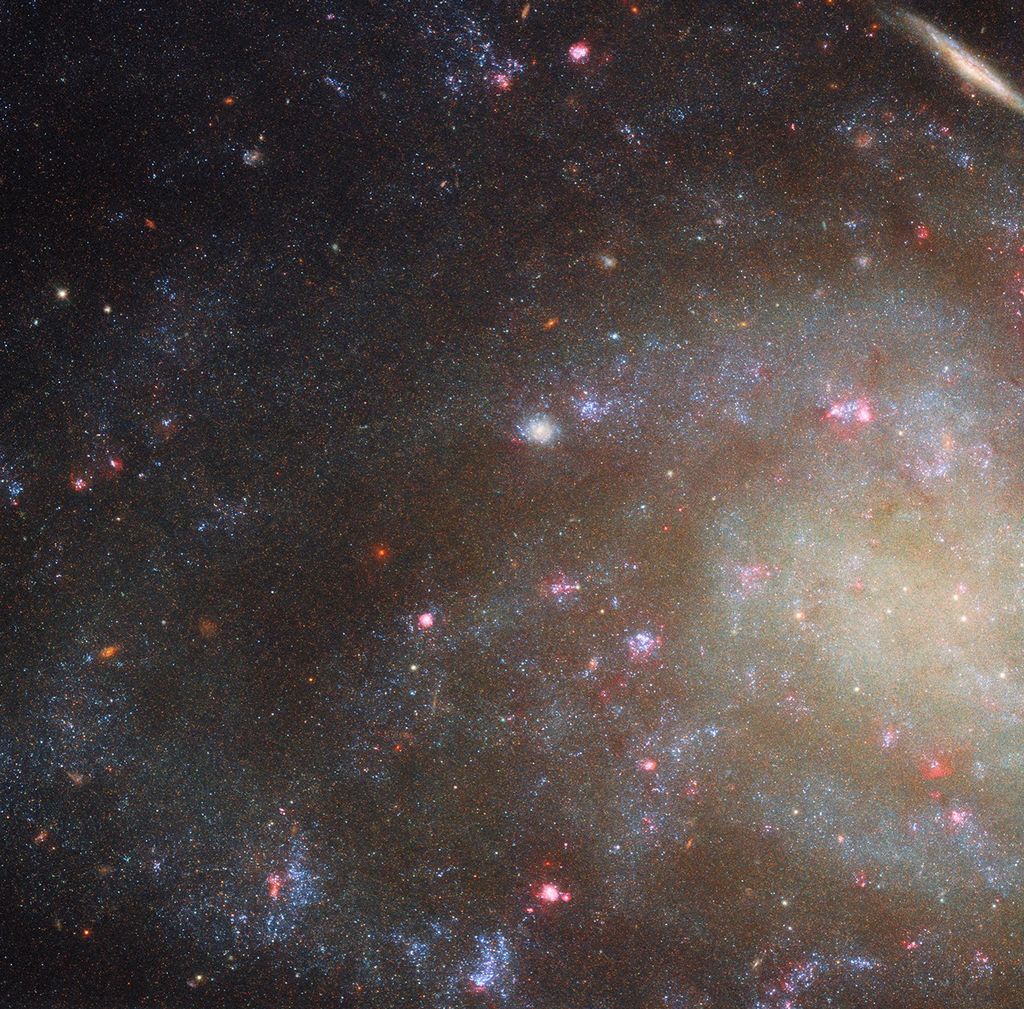

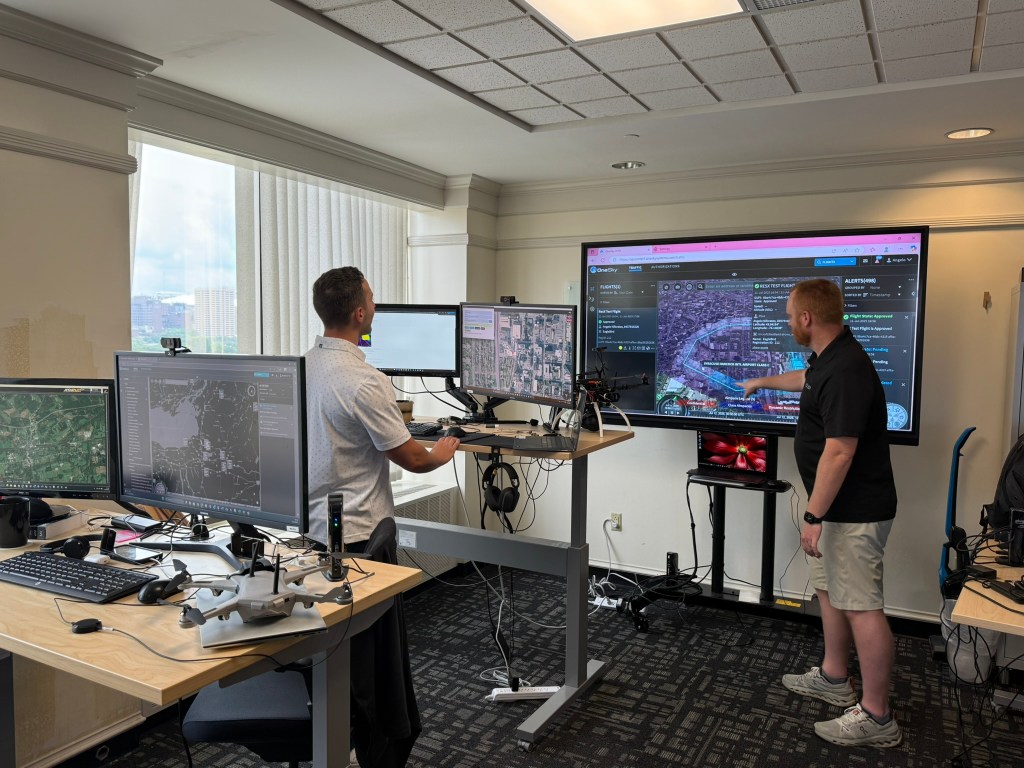






-Carolyn_Y._Ng.jpeg?w=1024)

